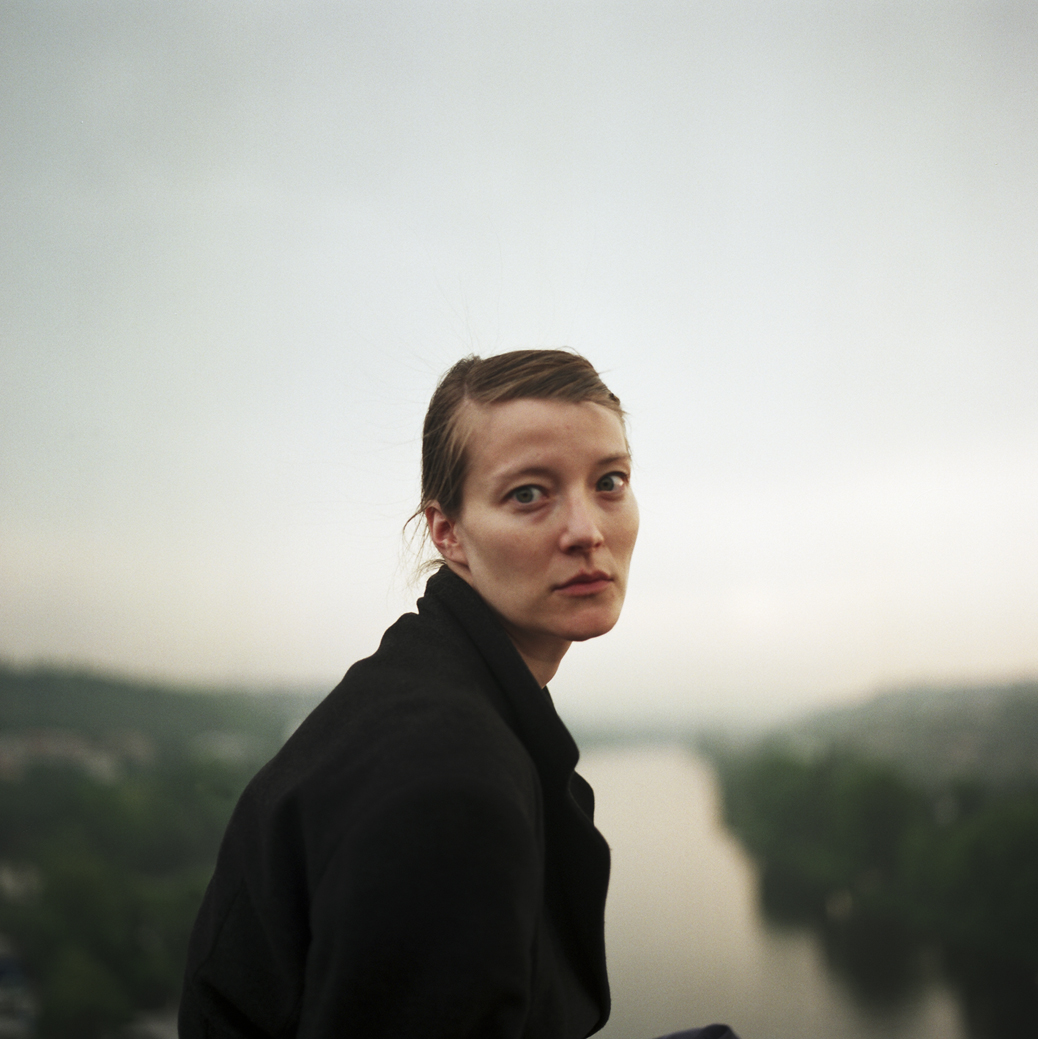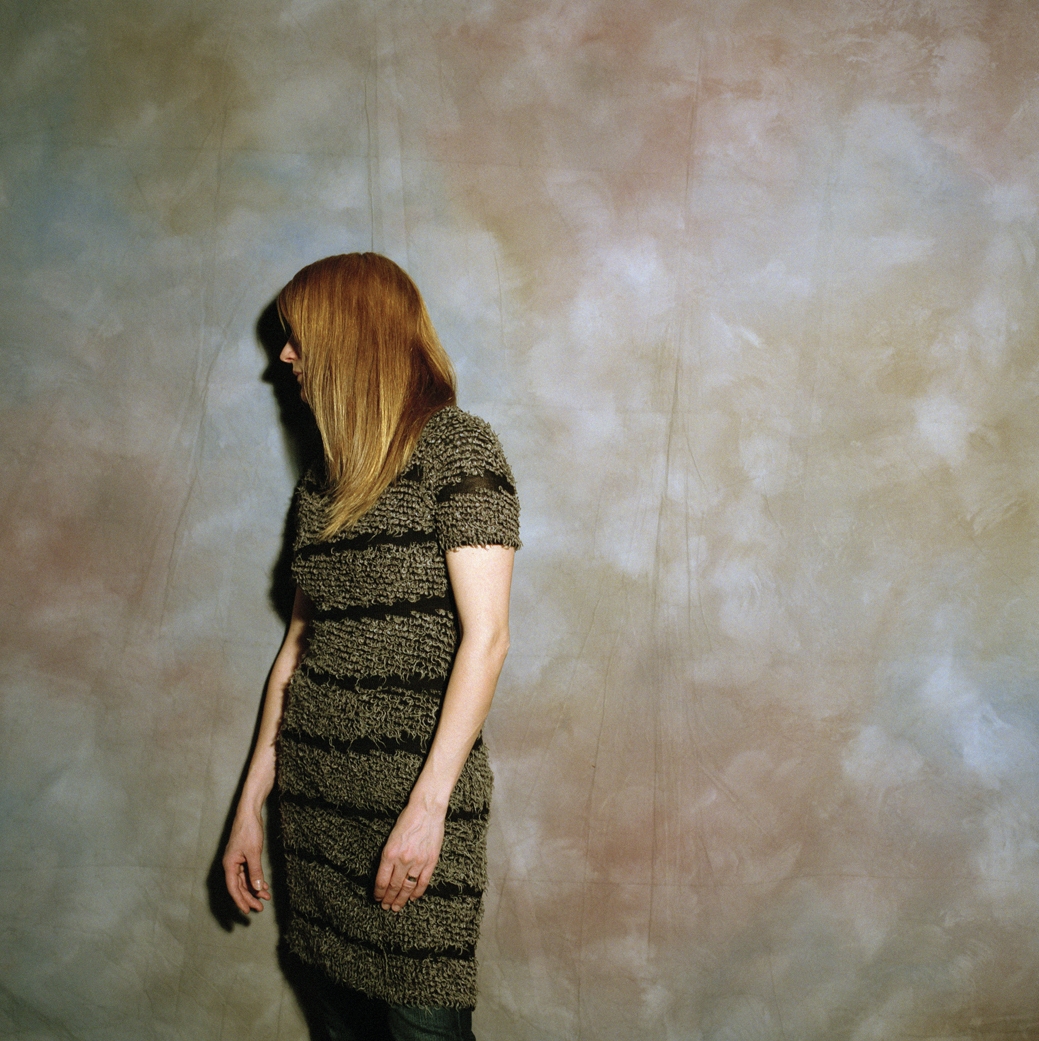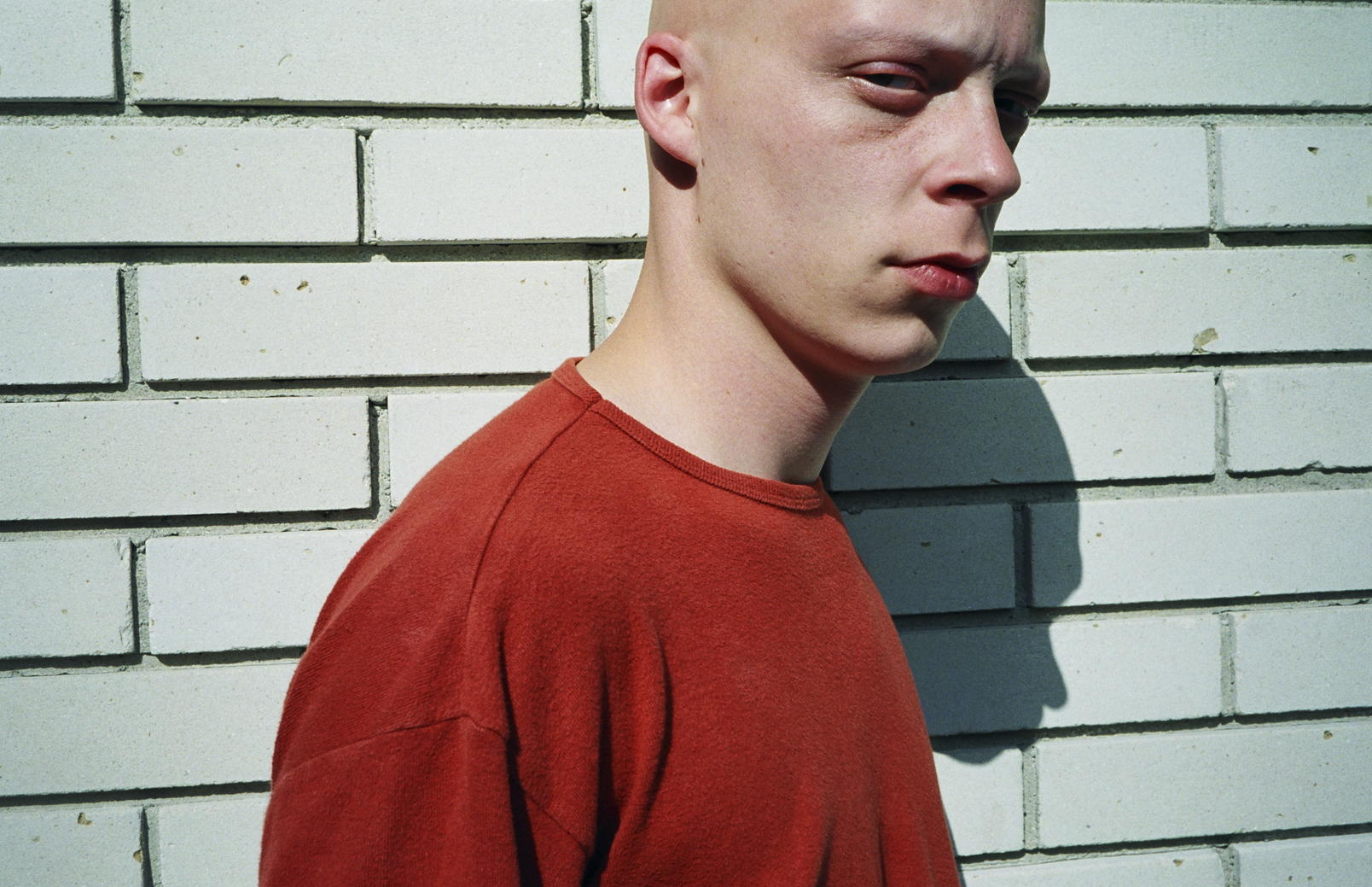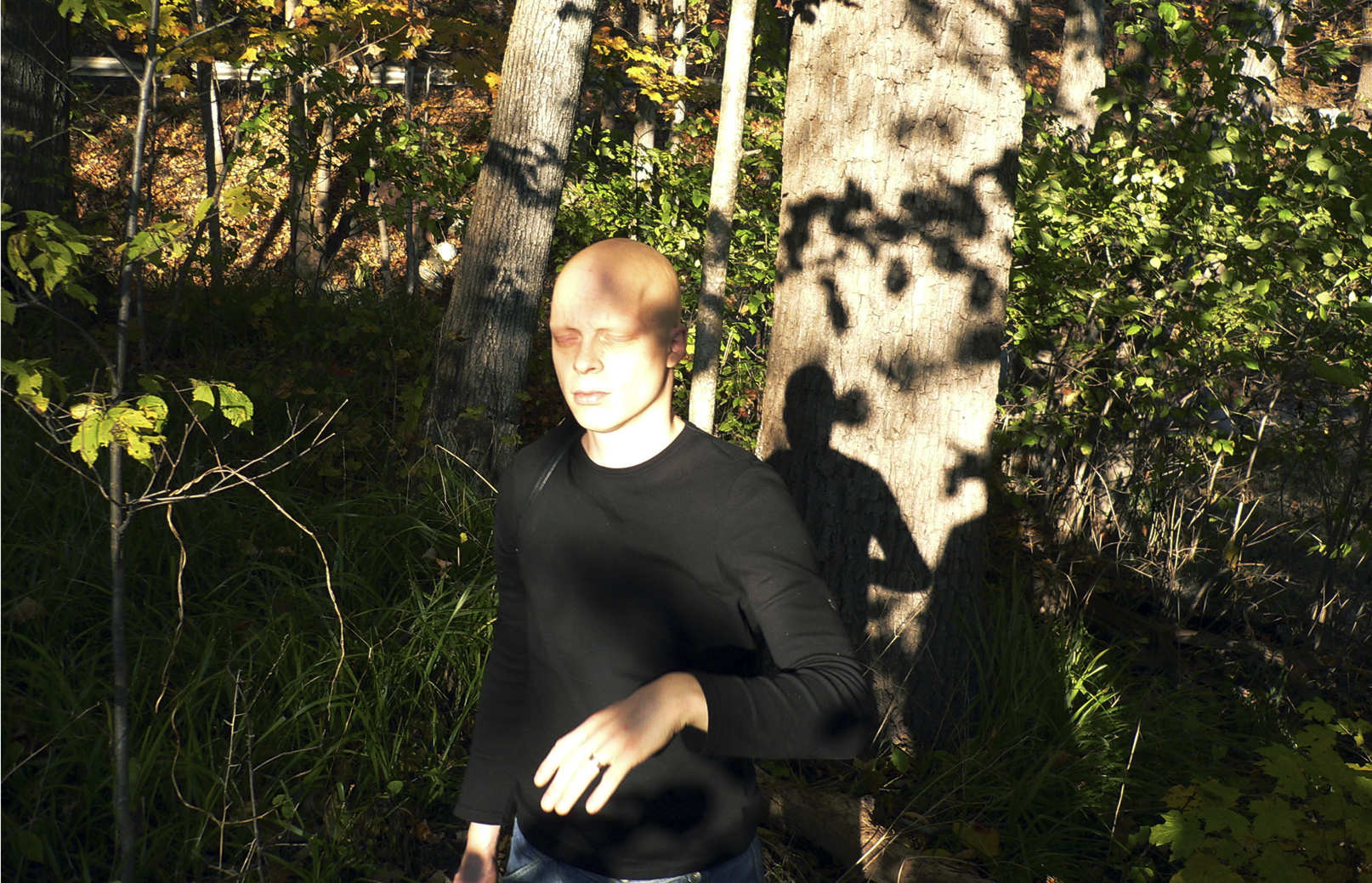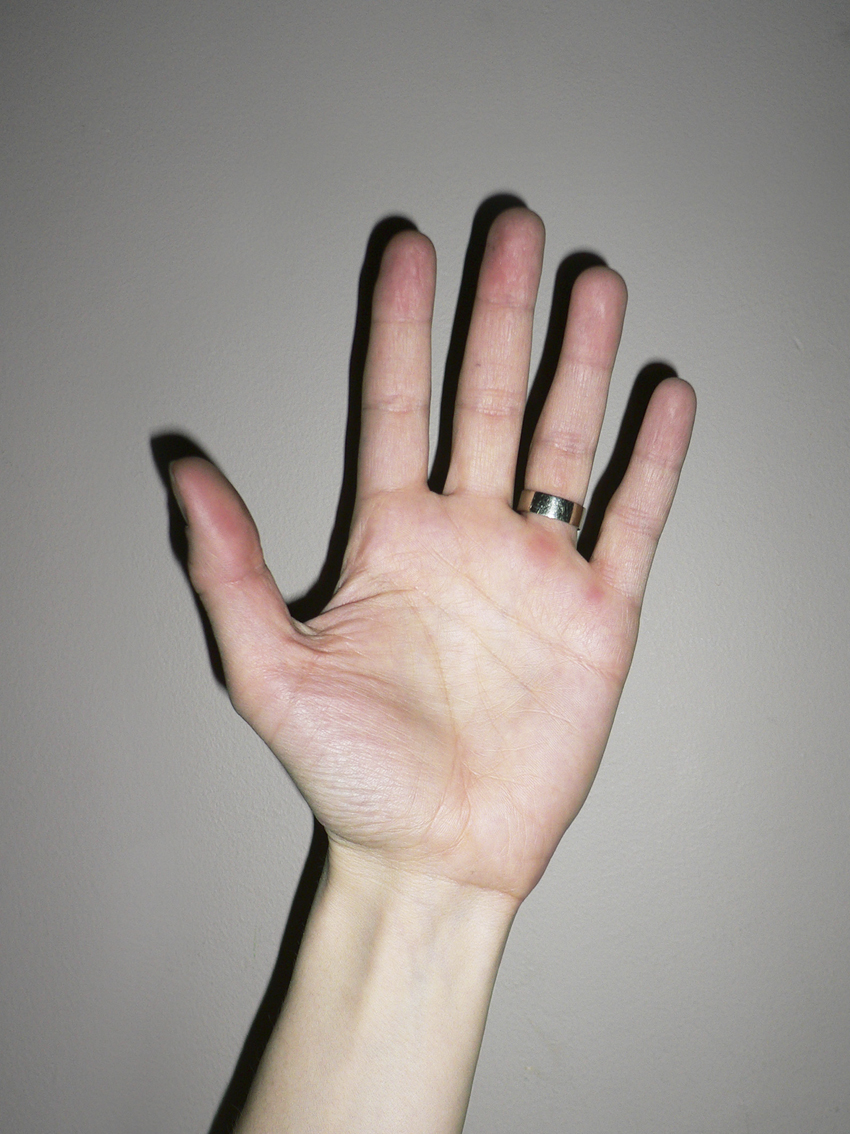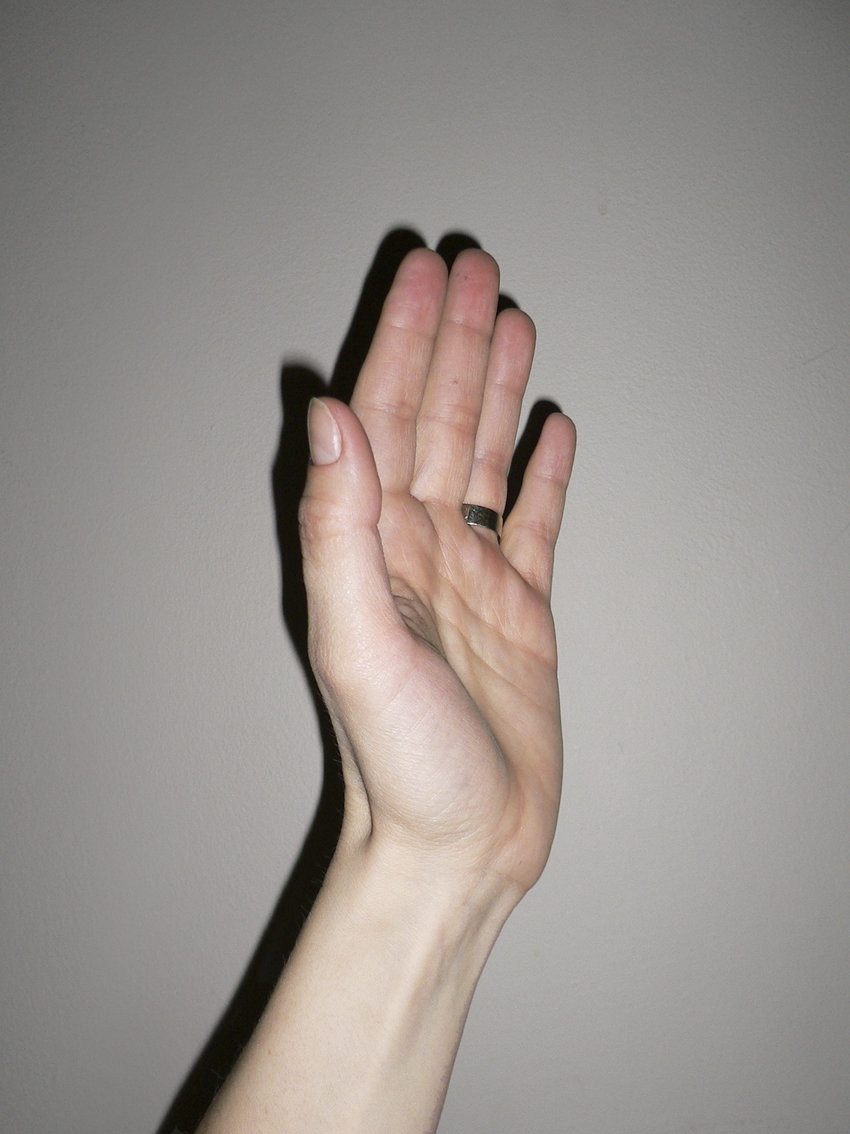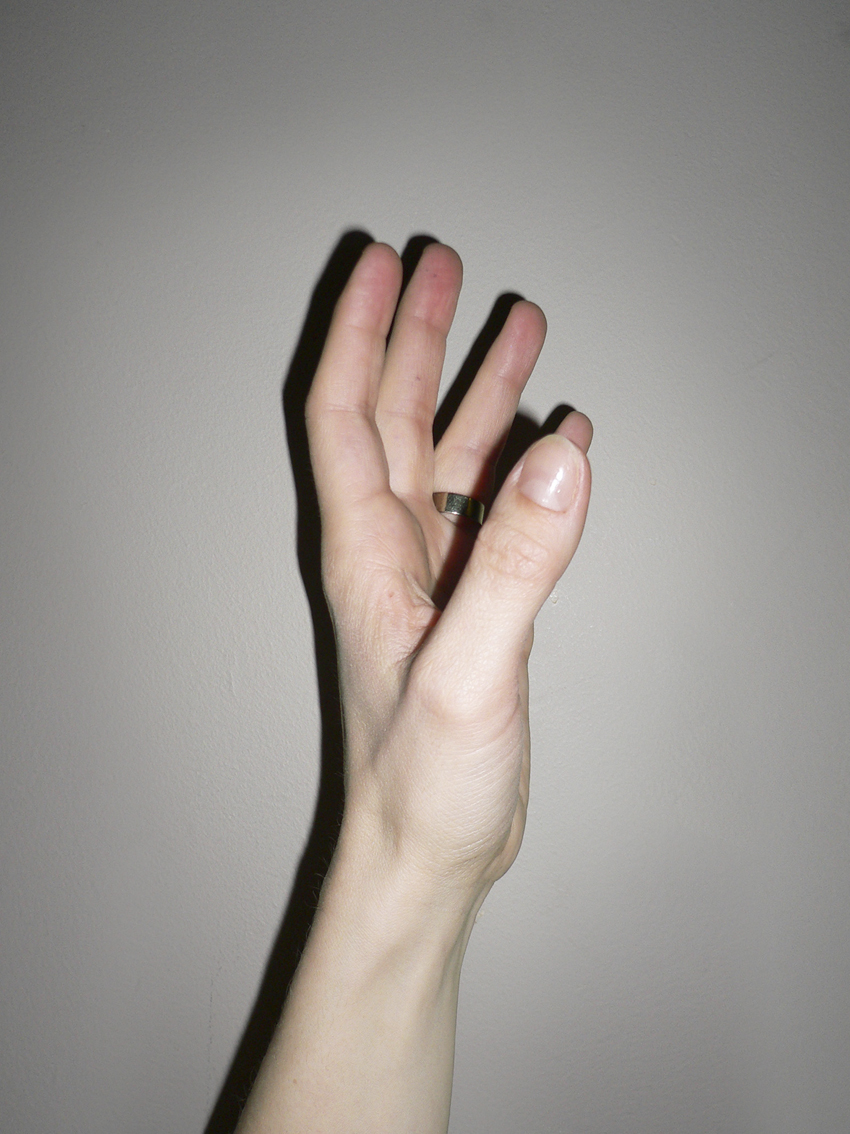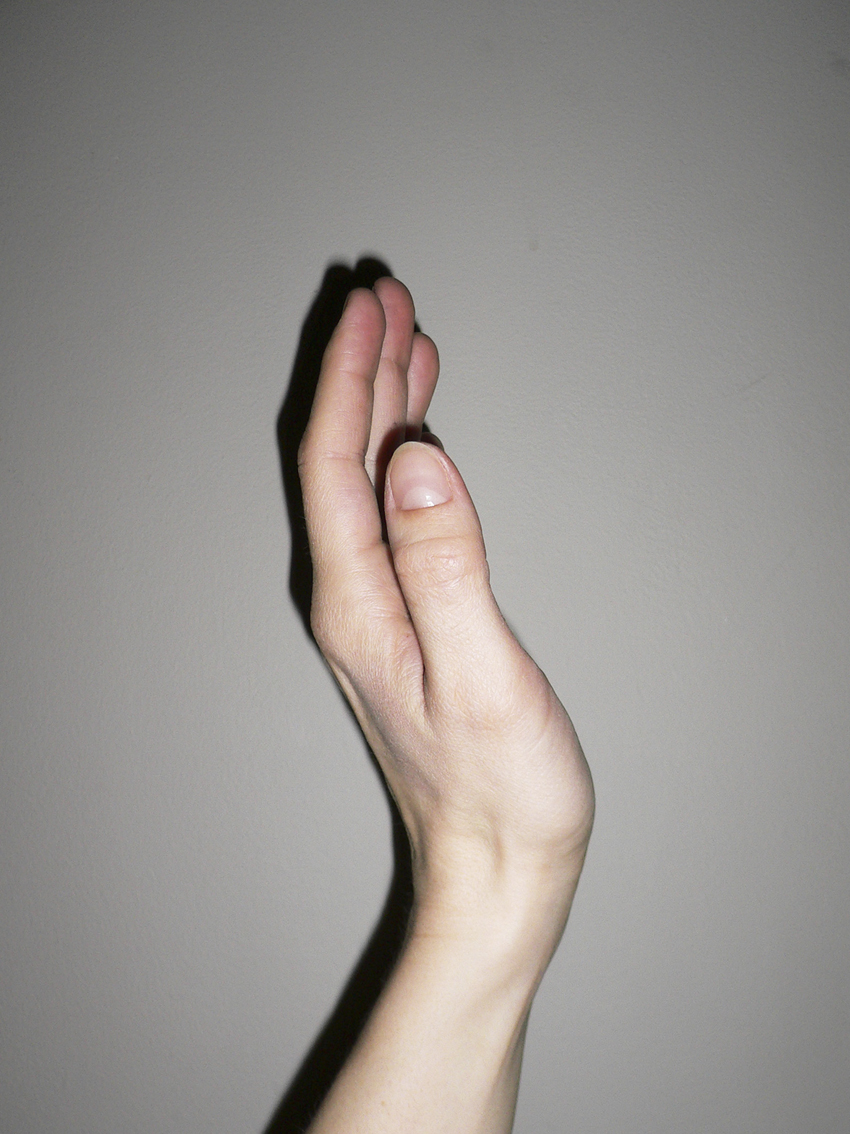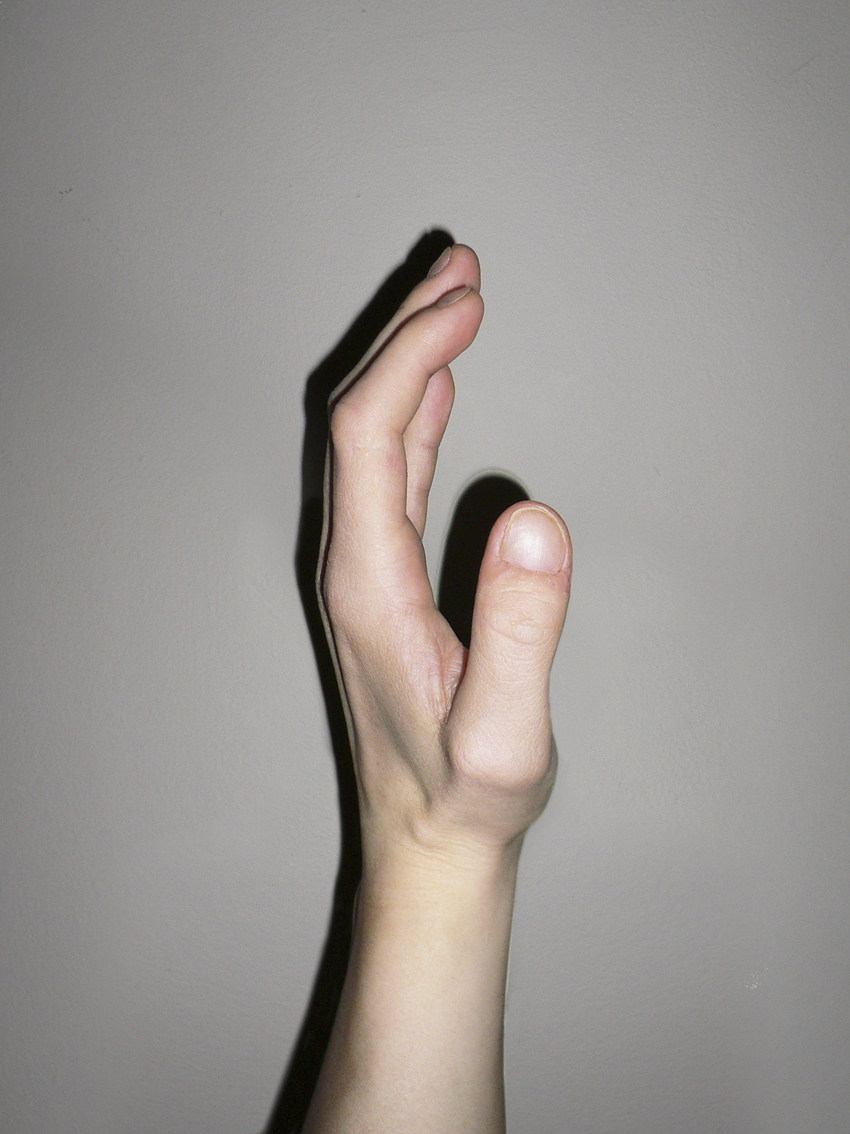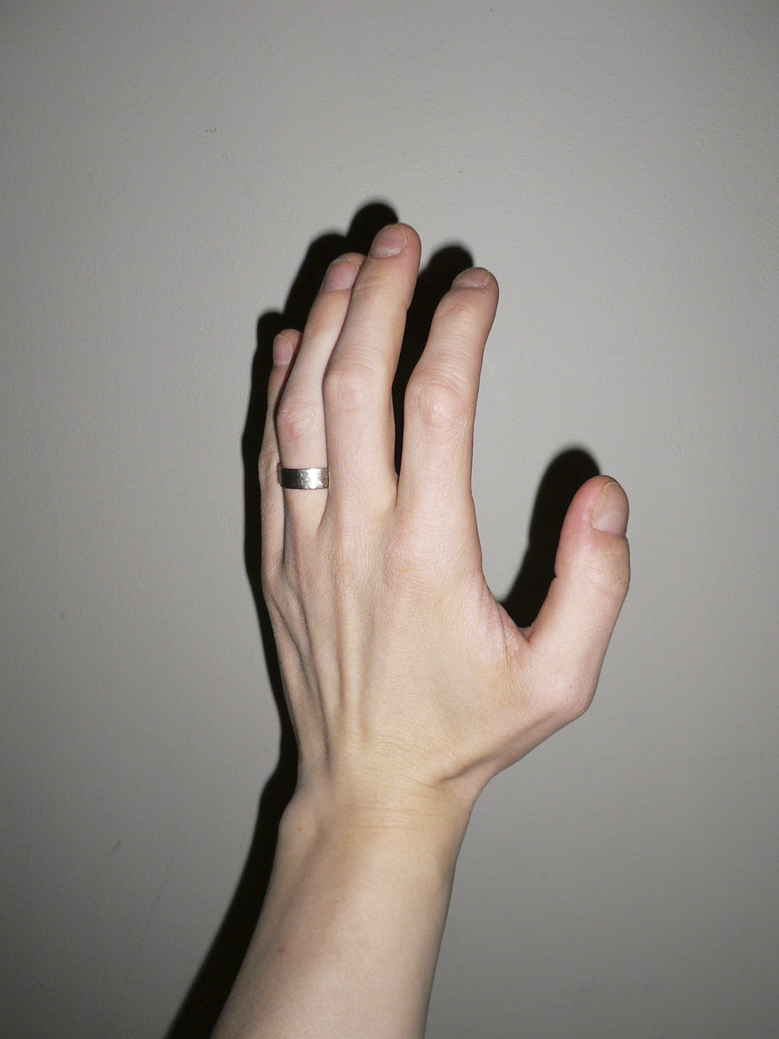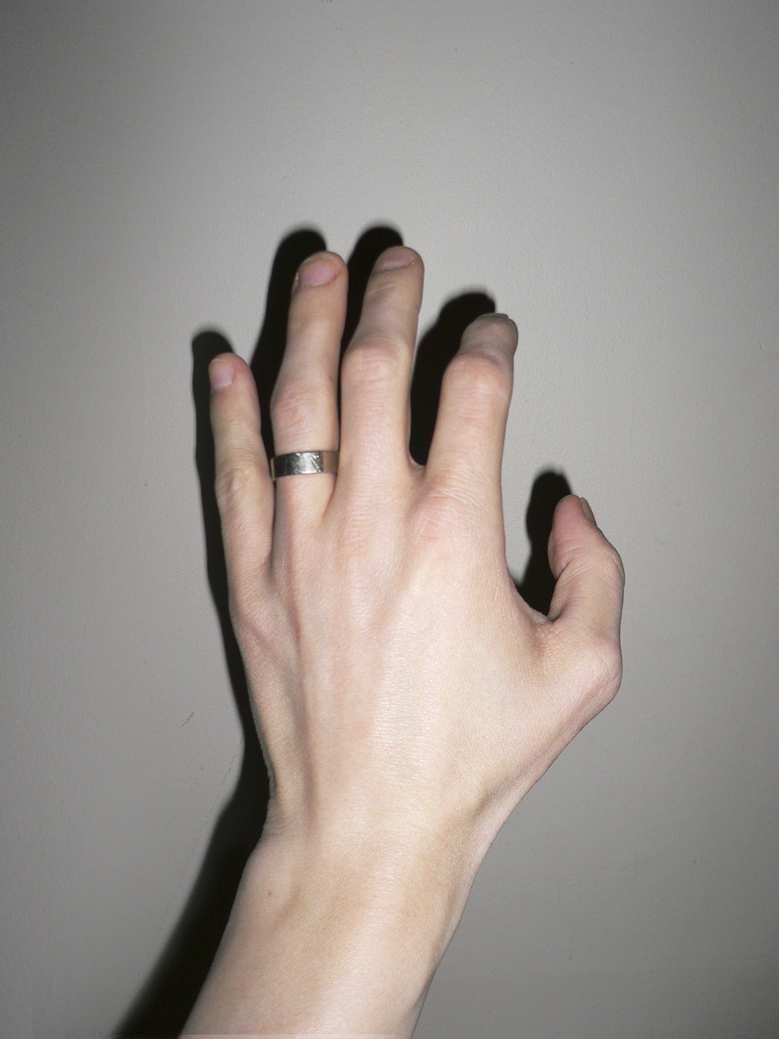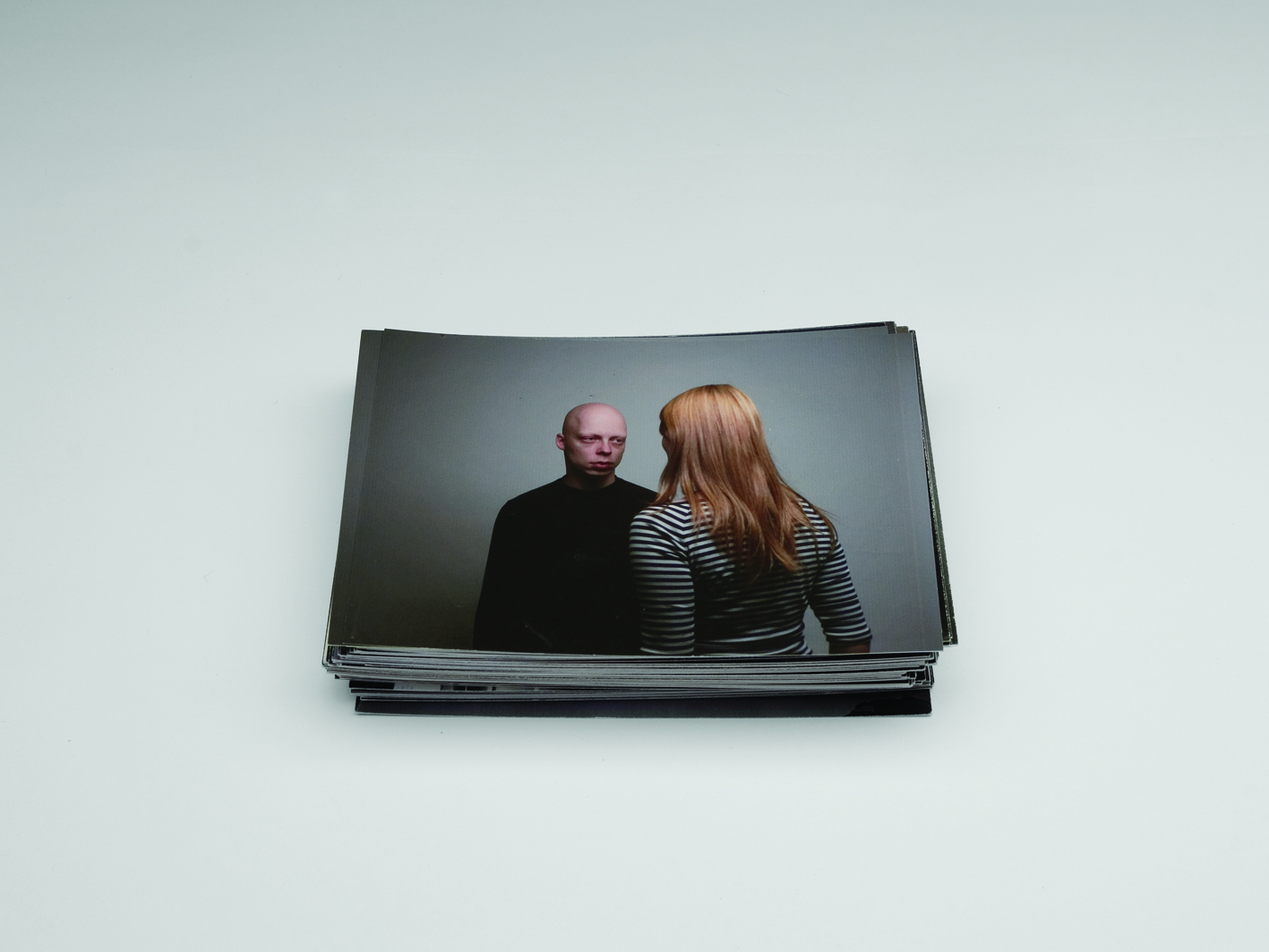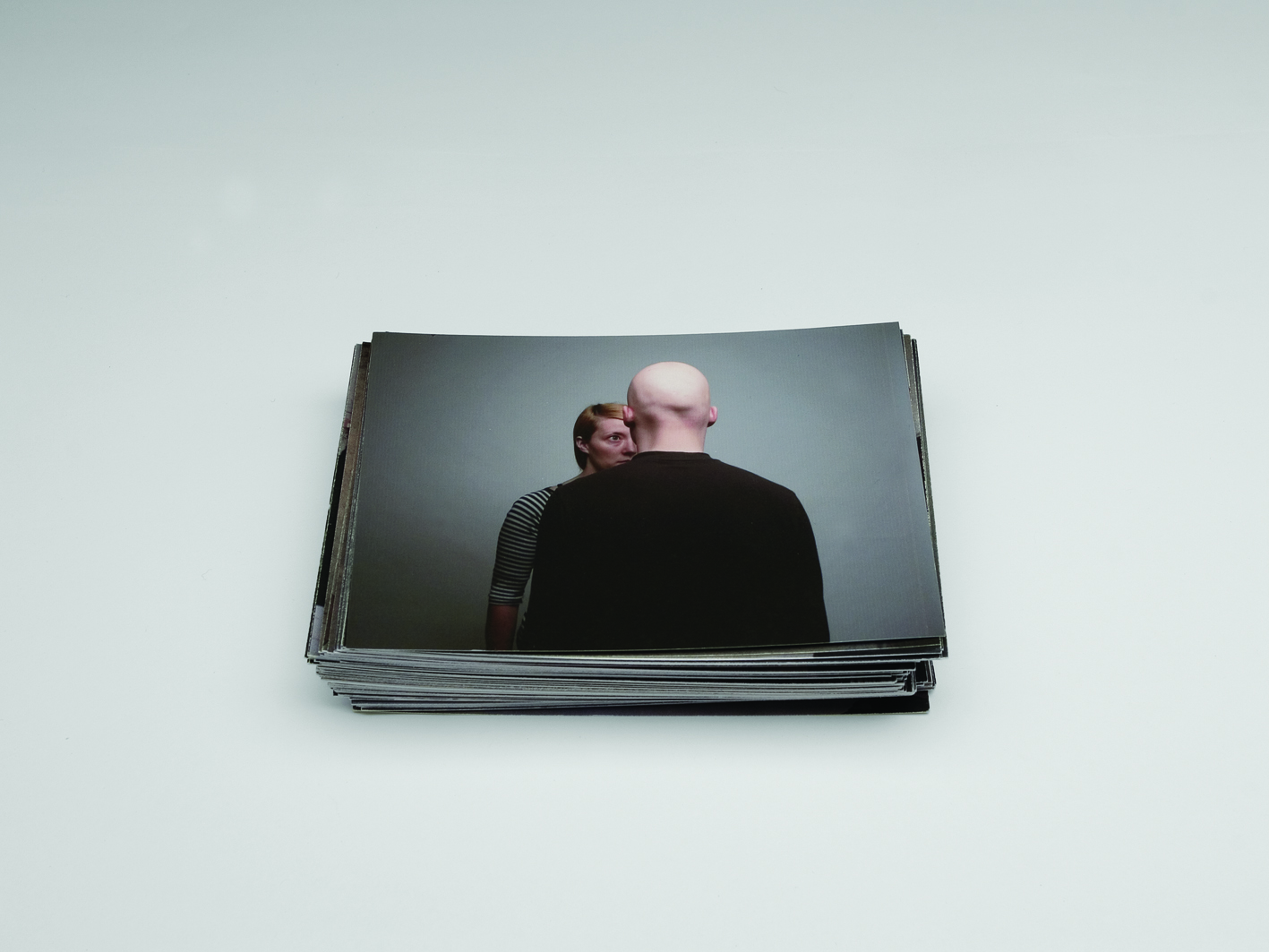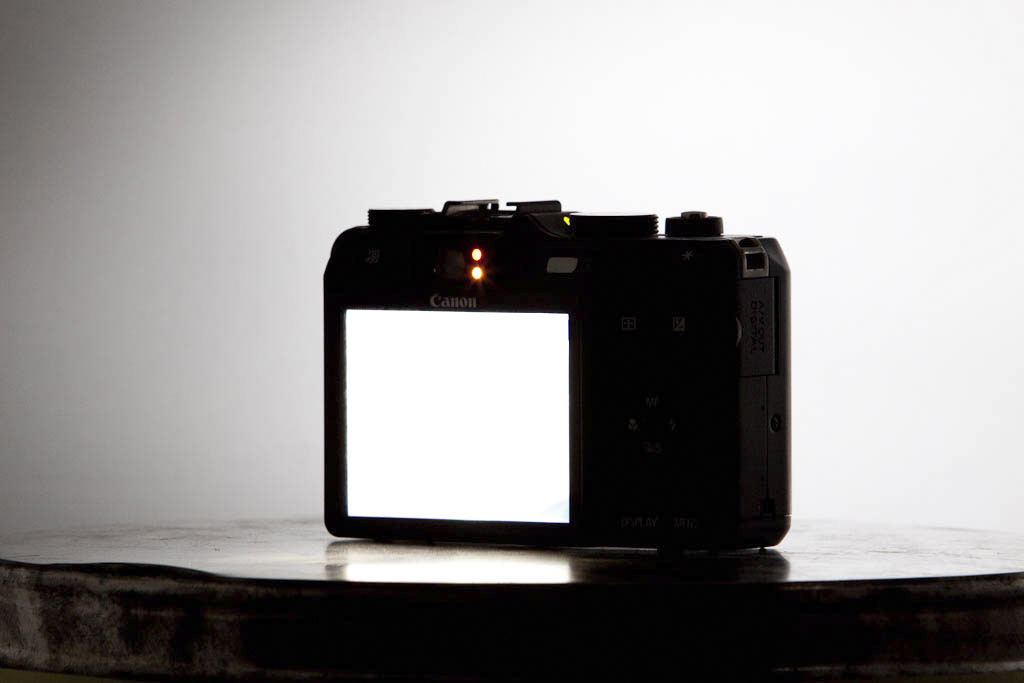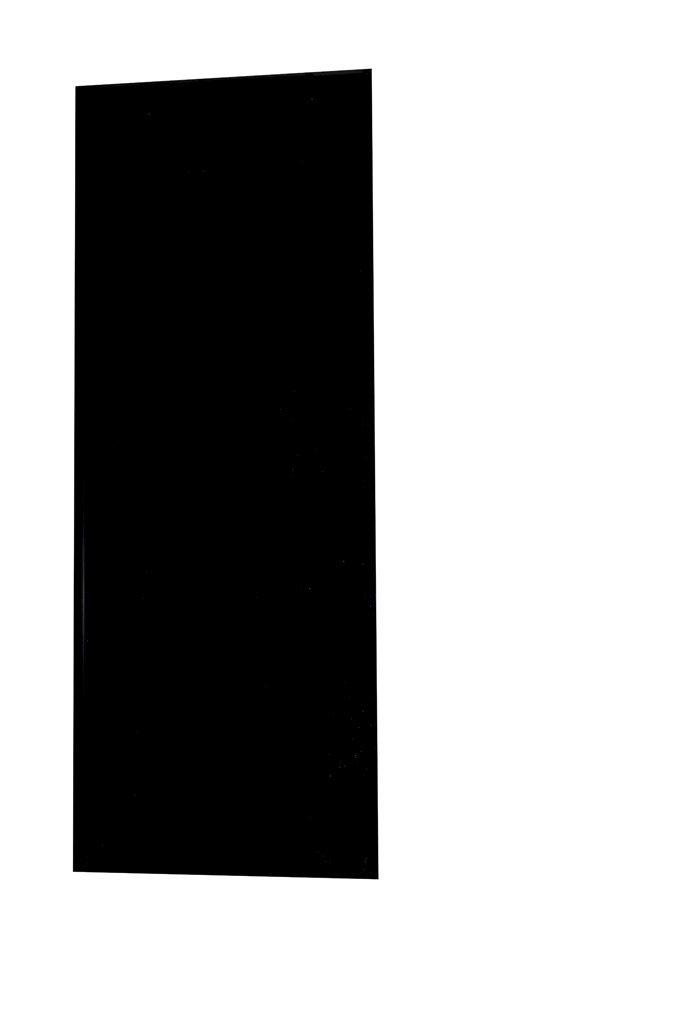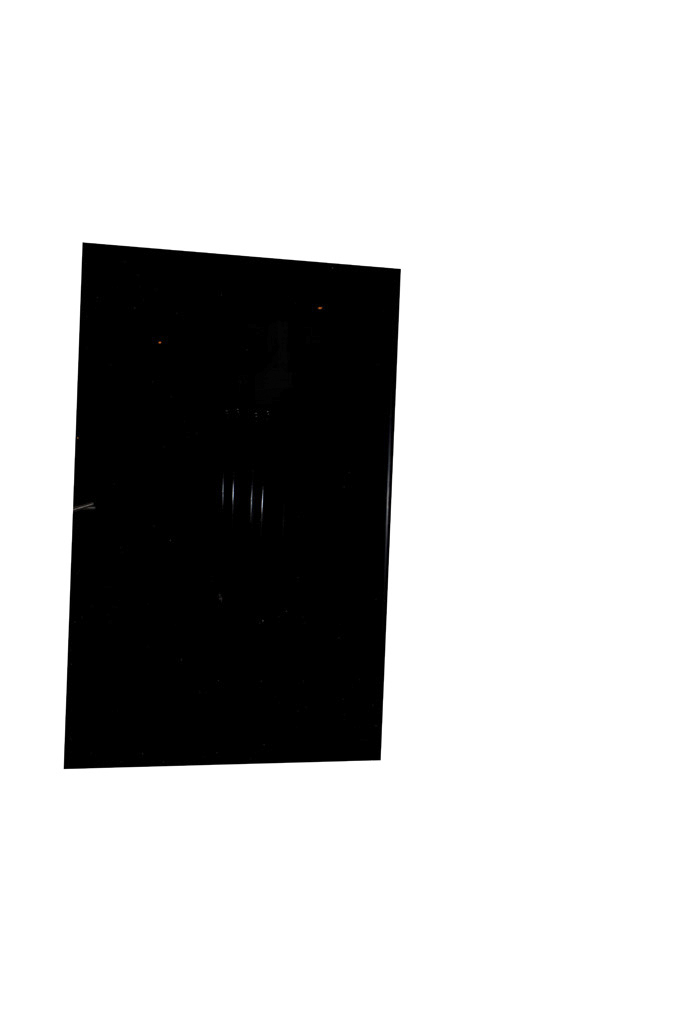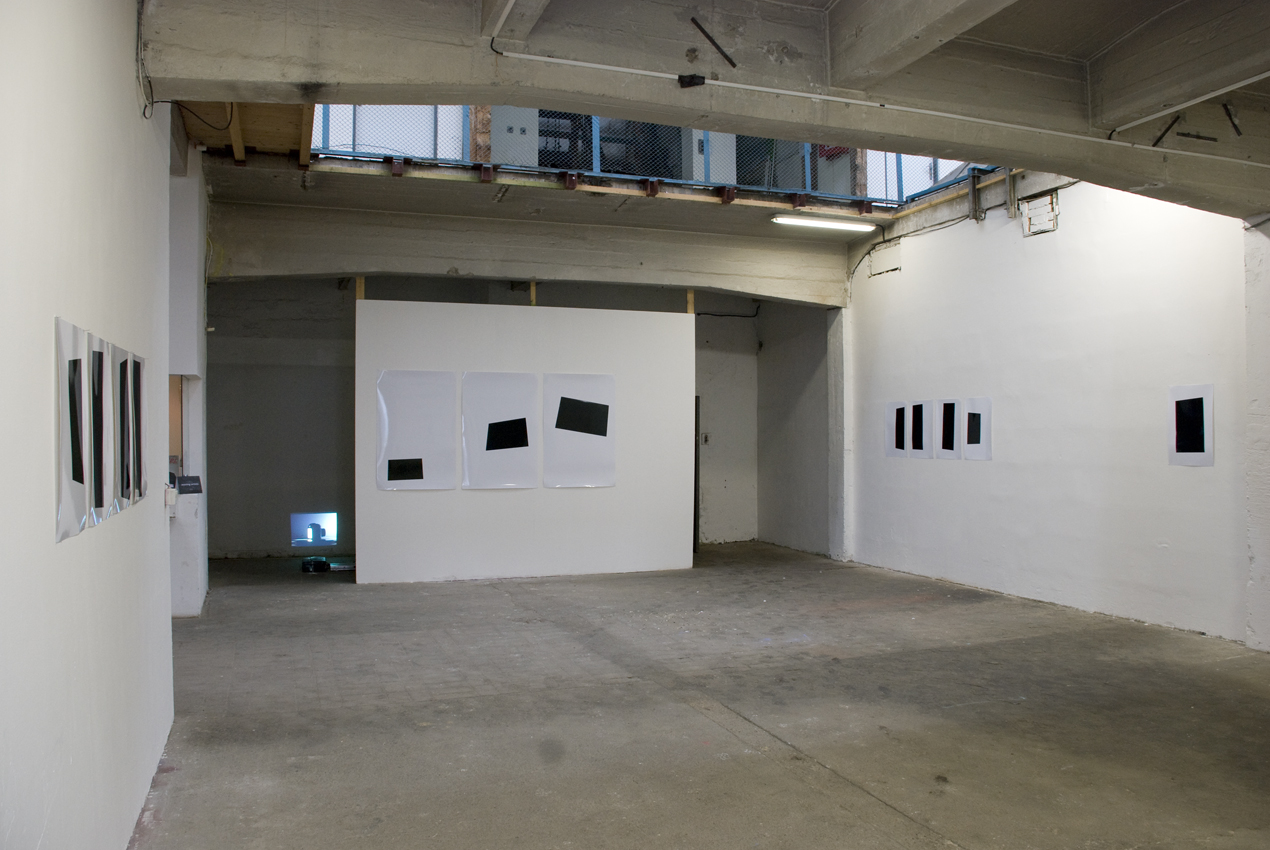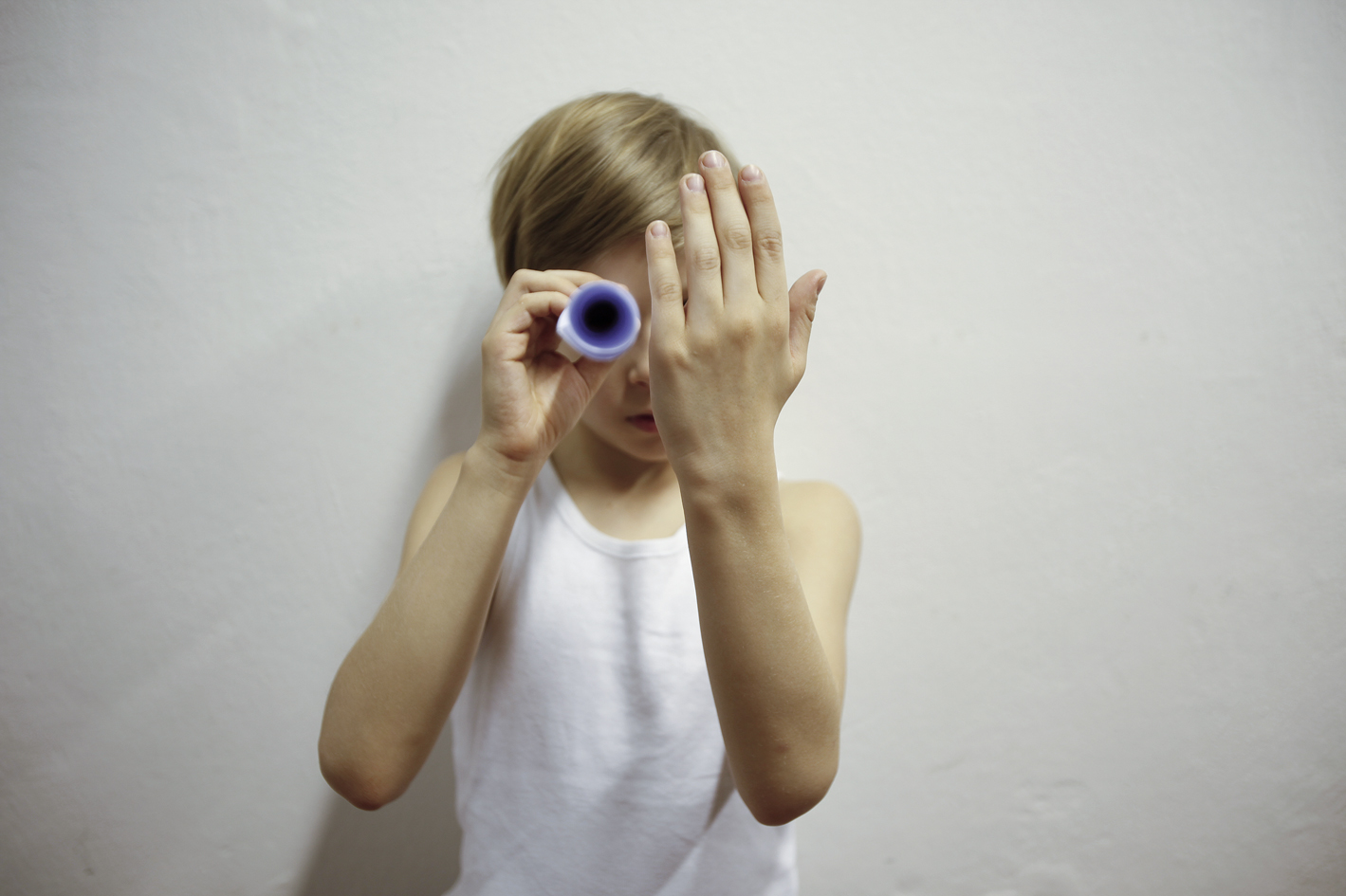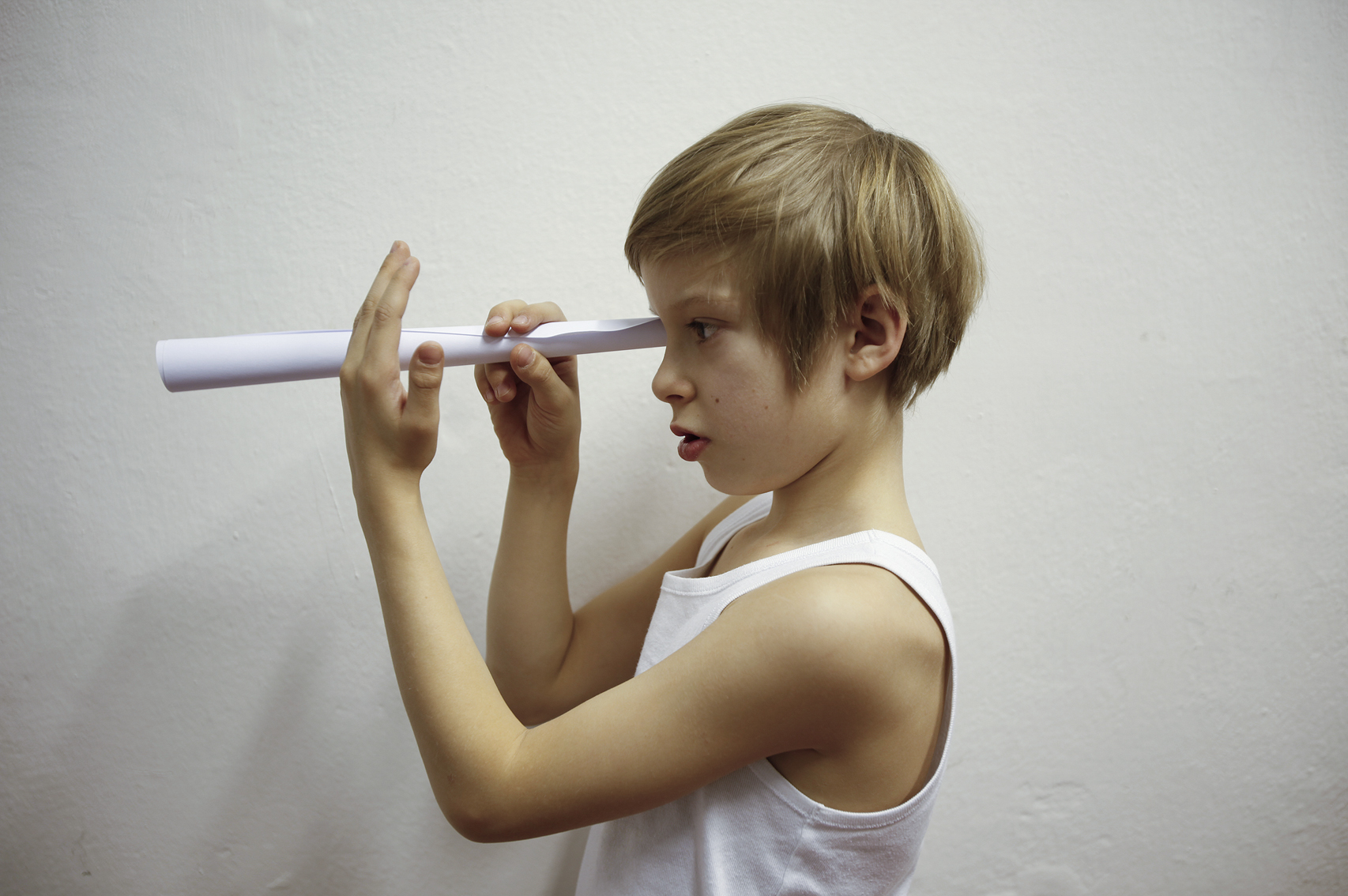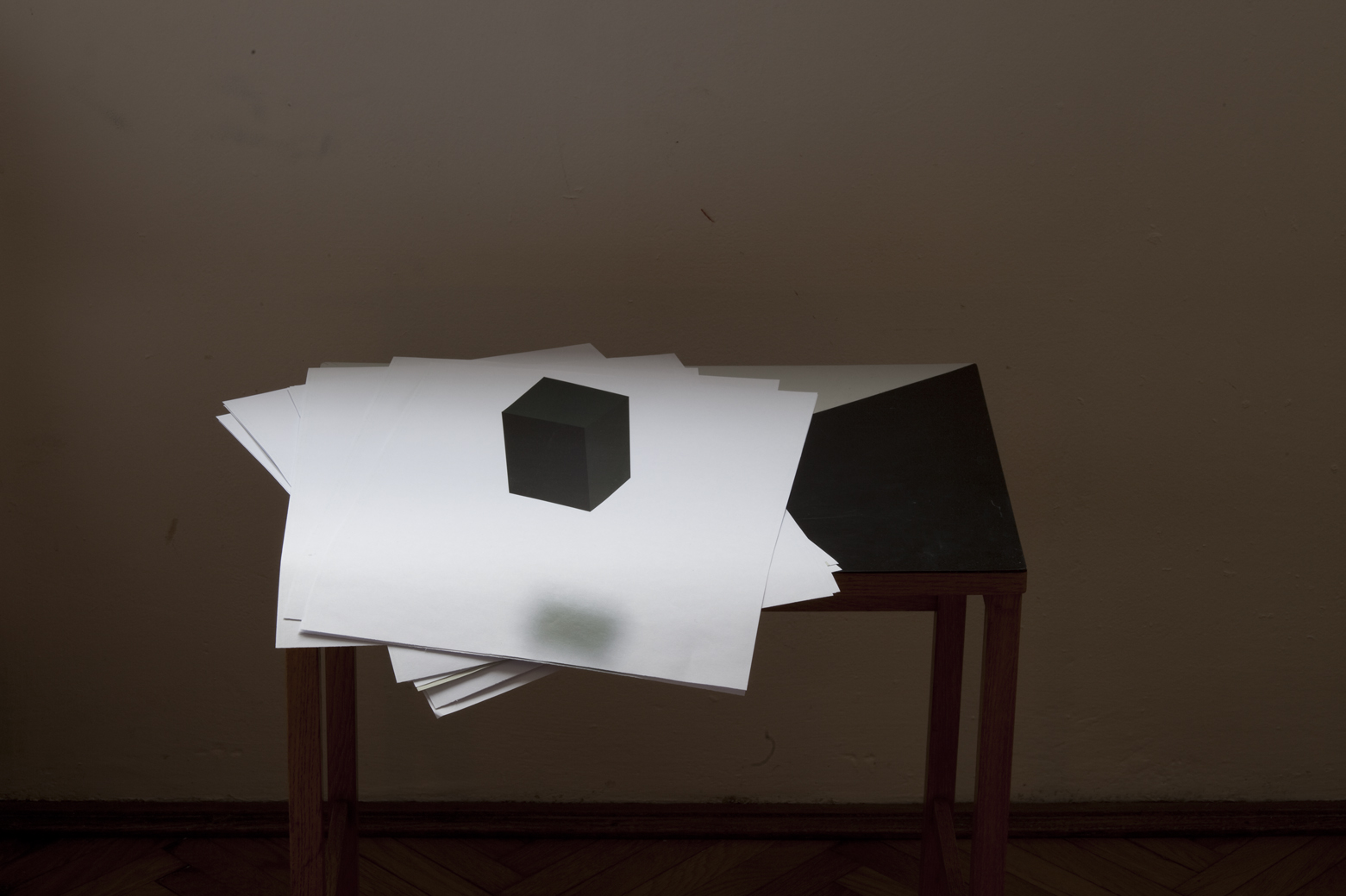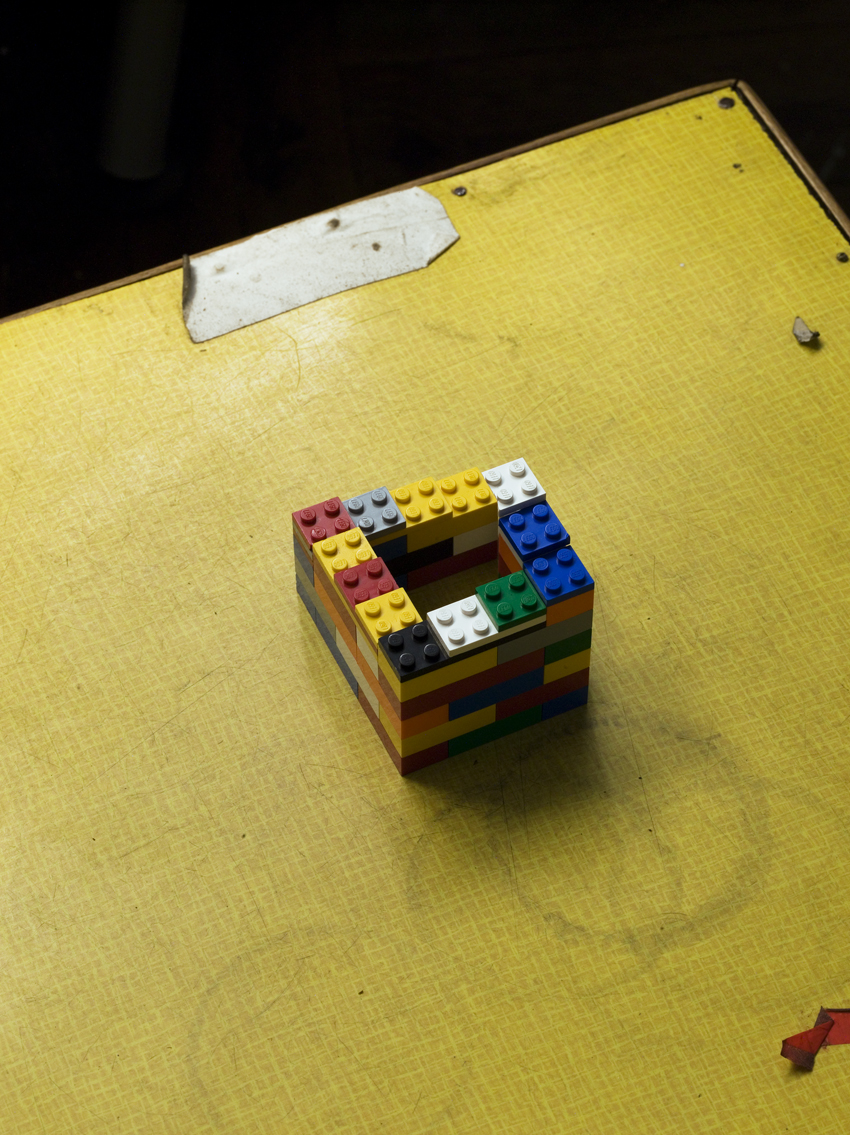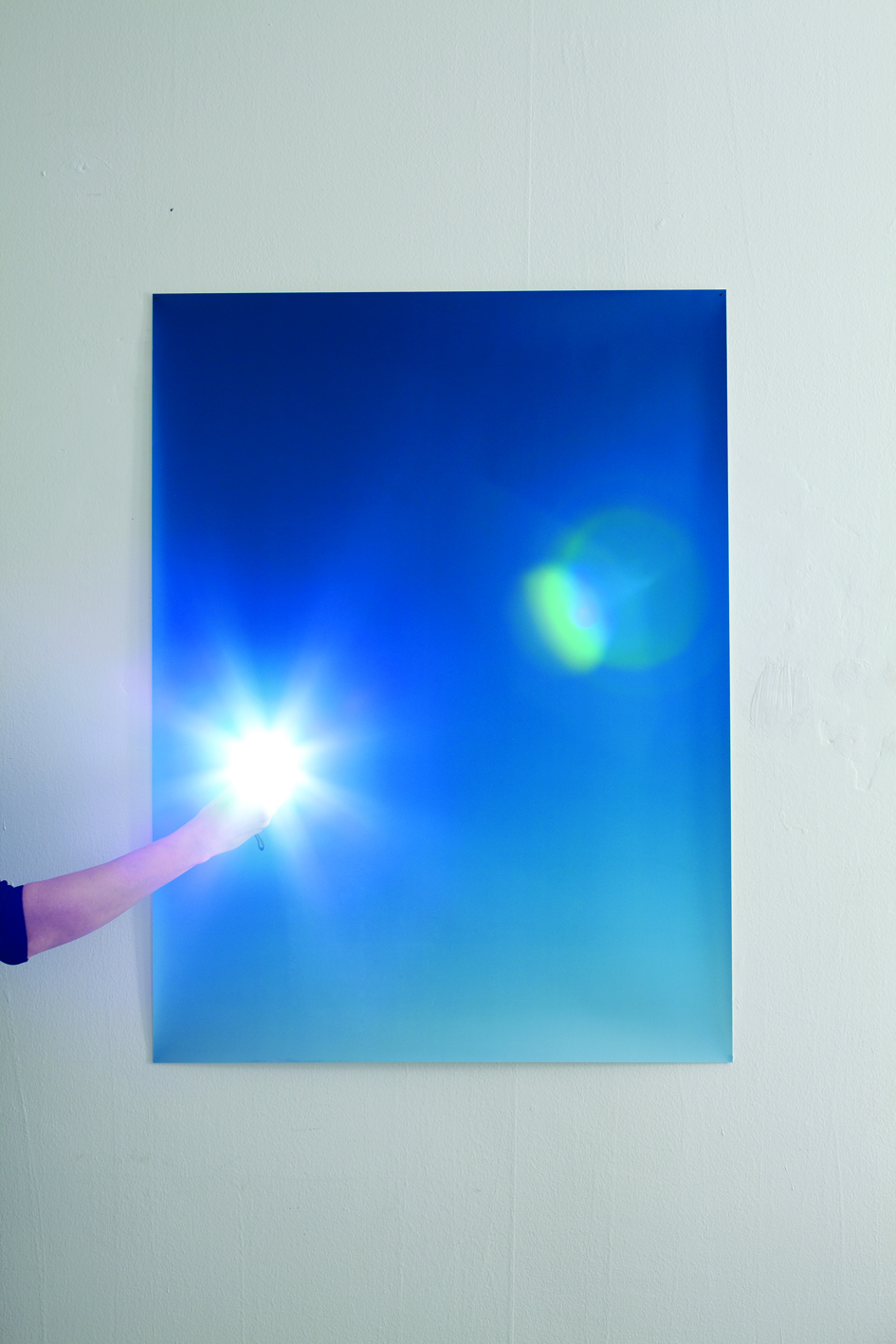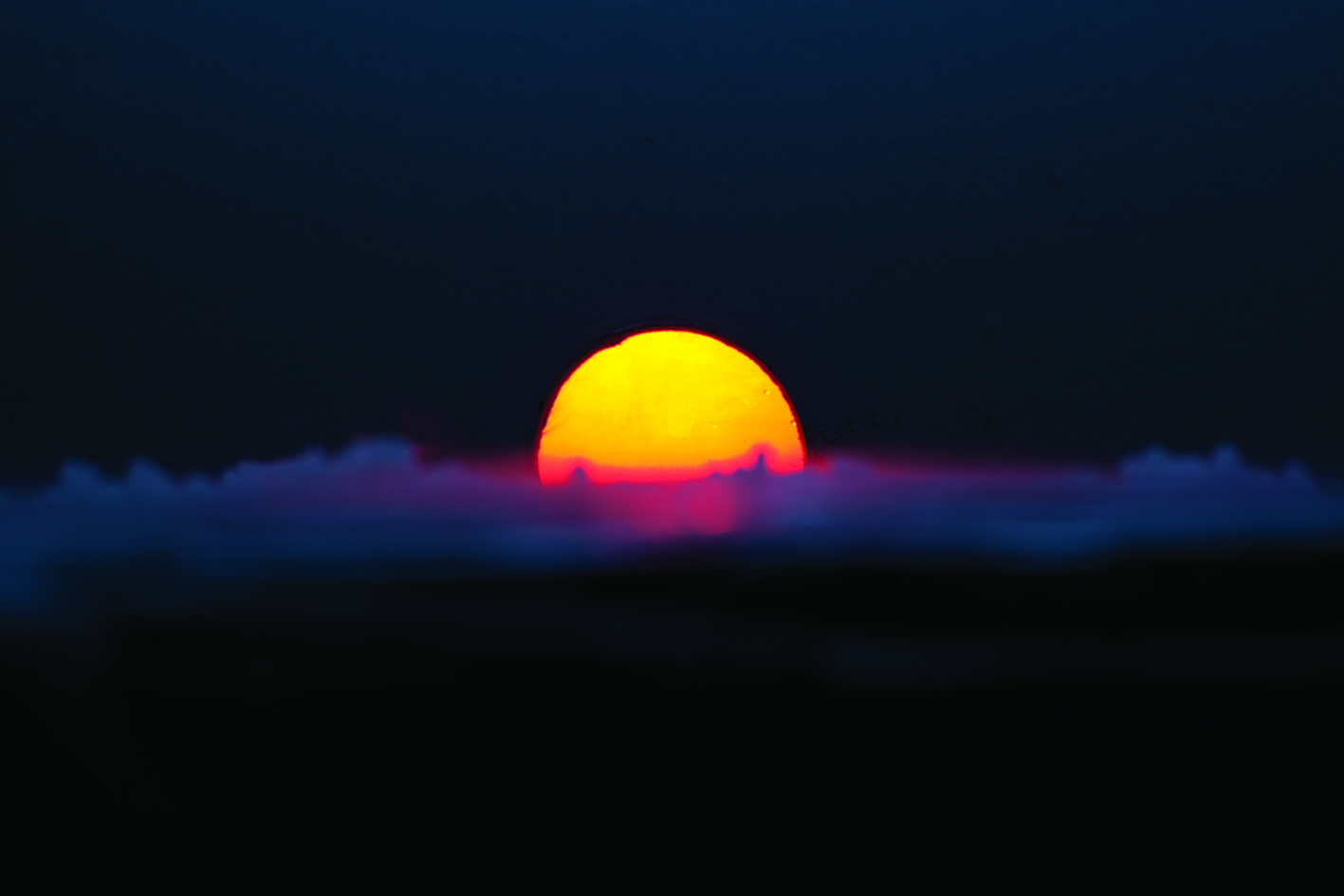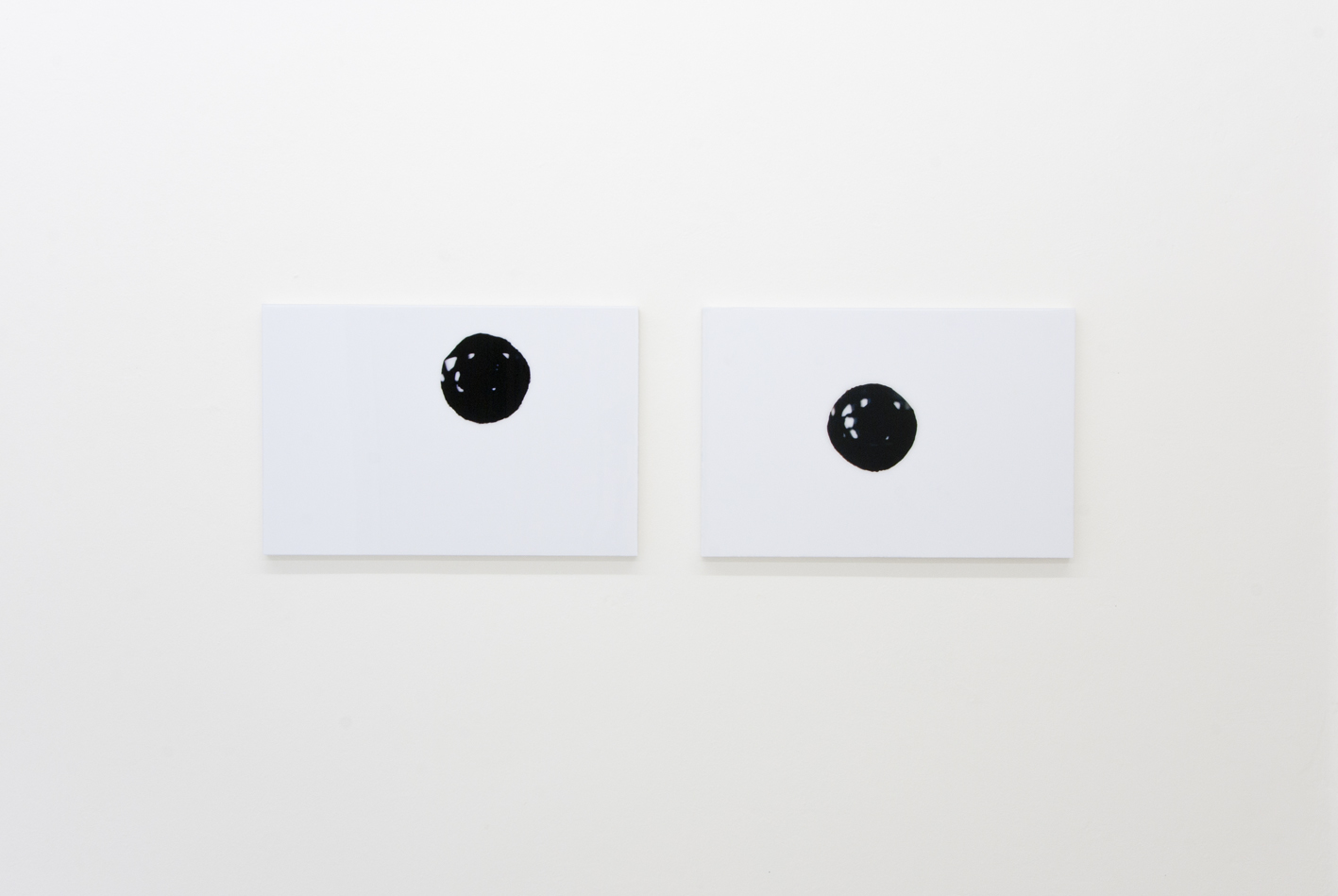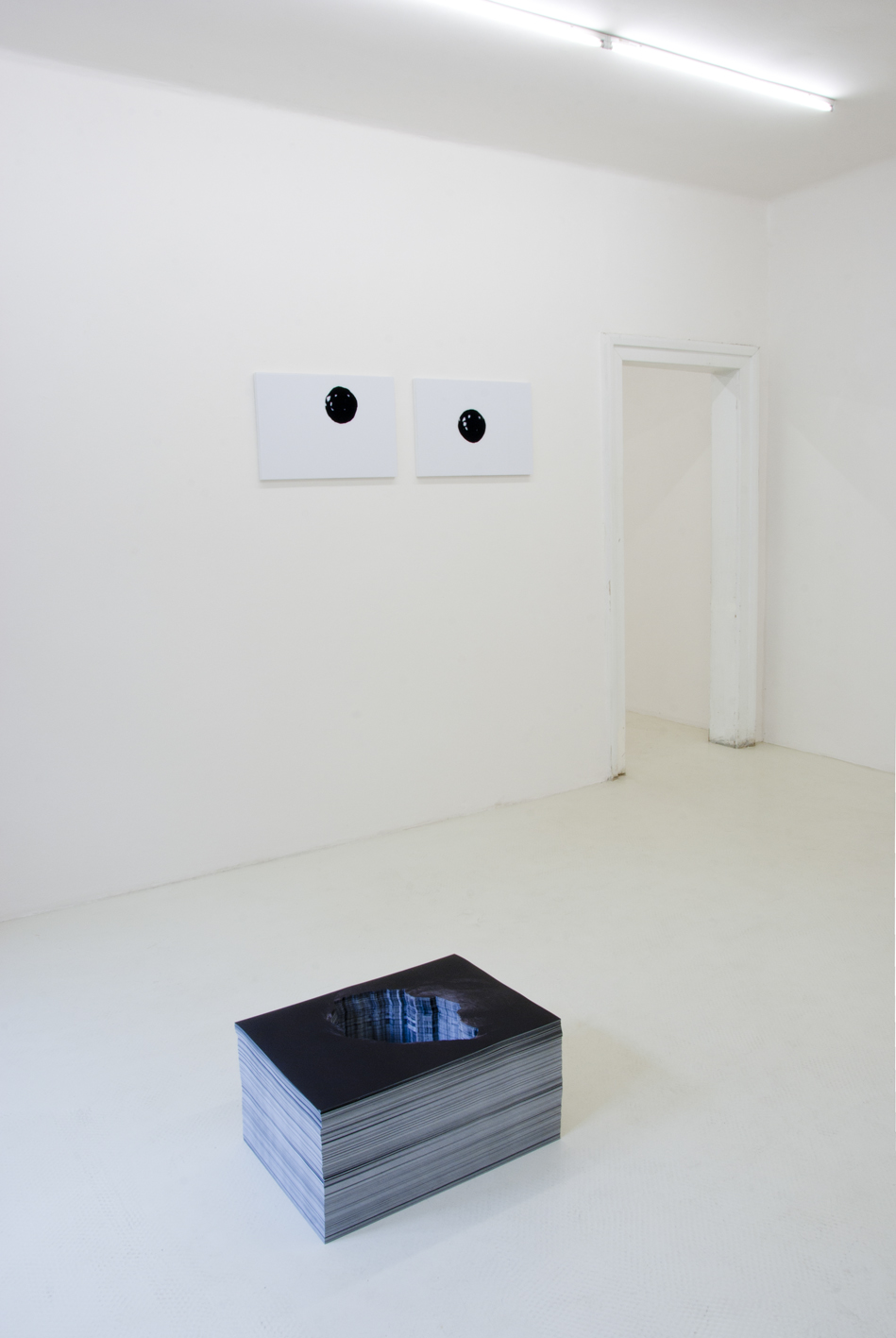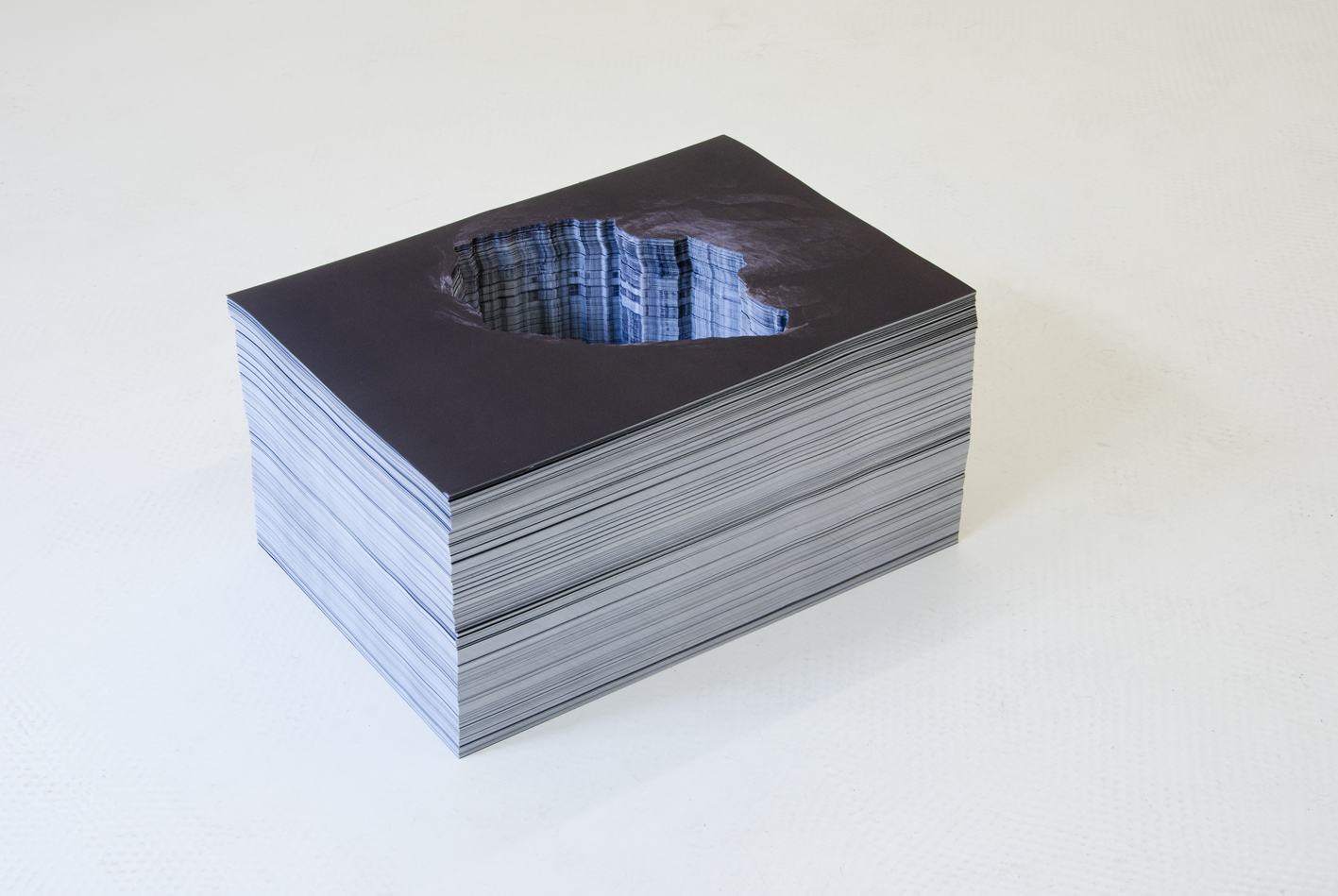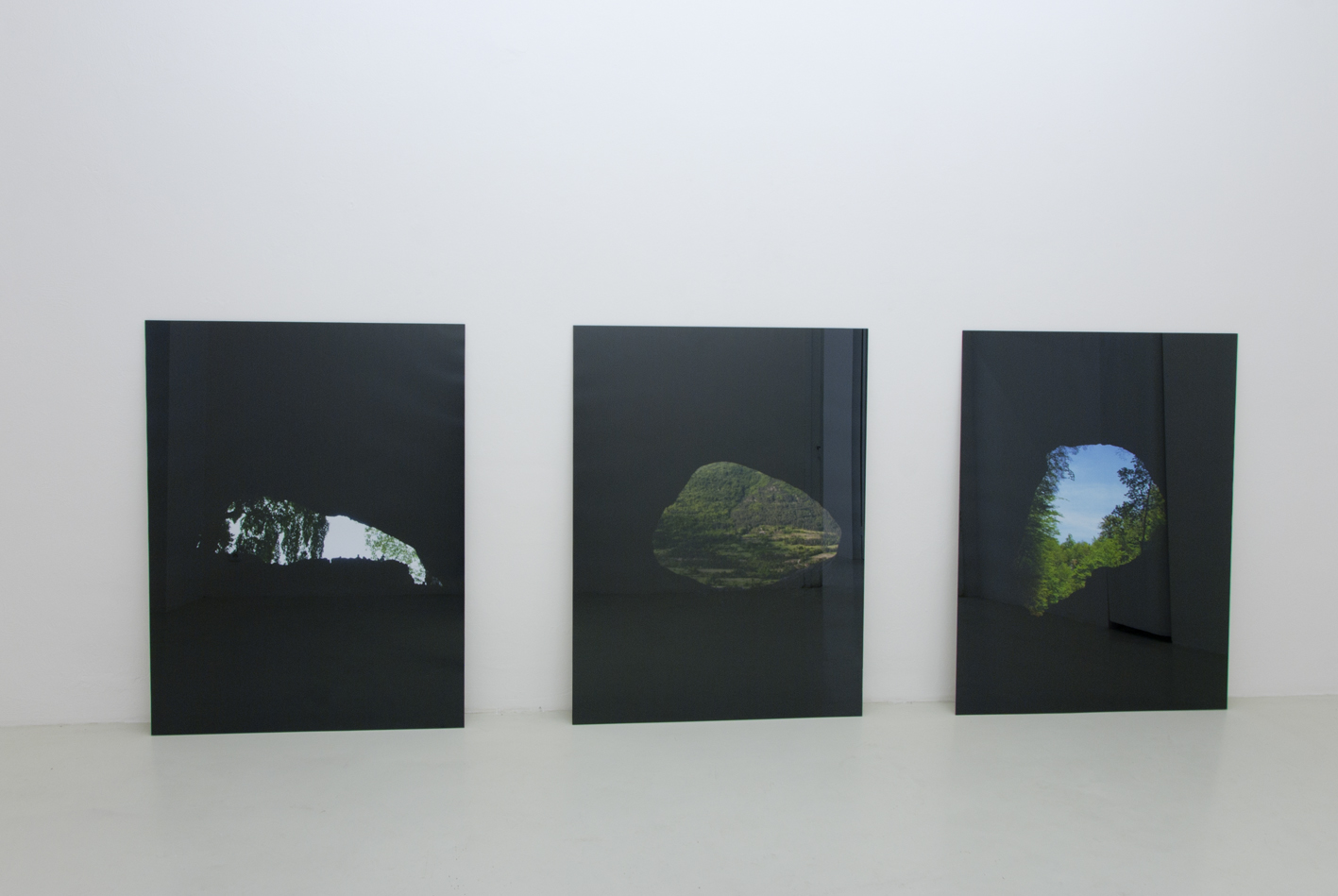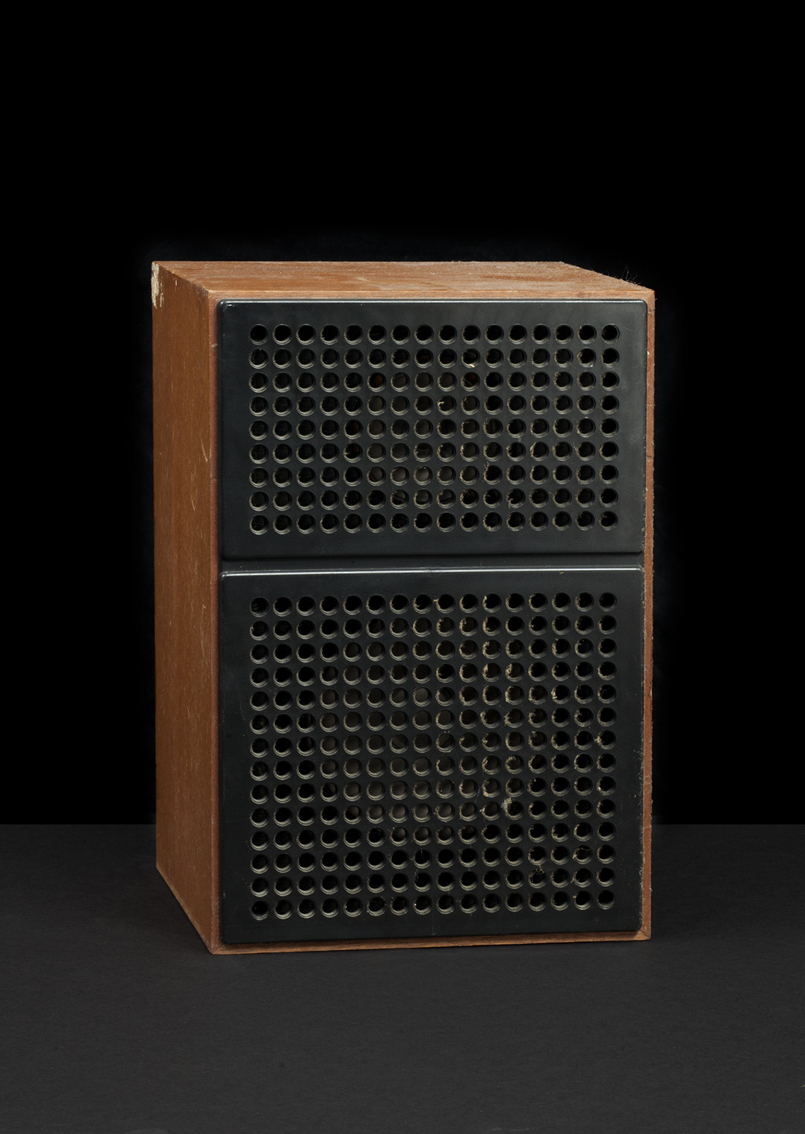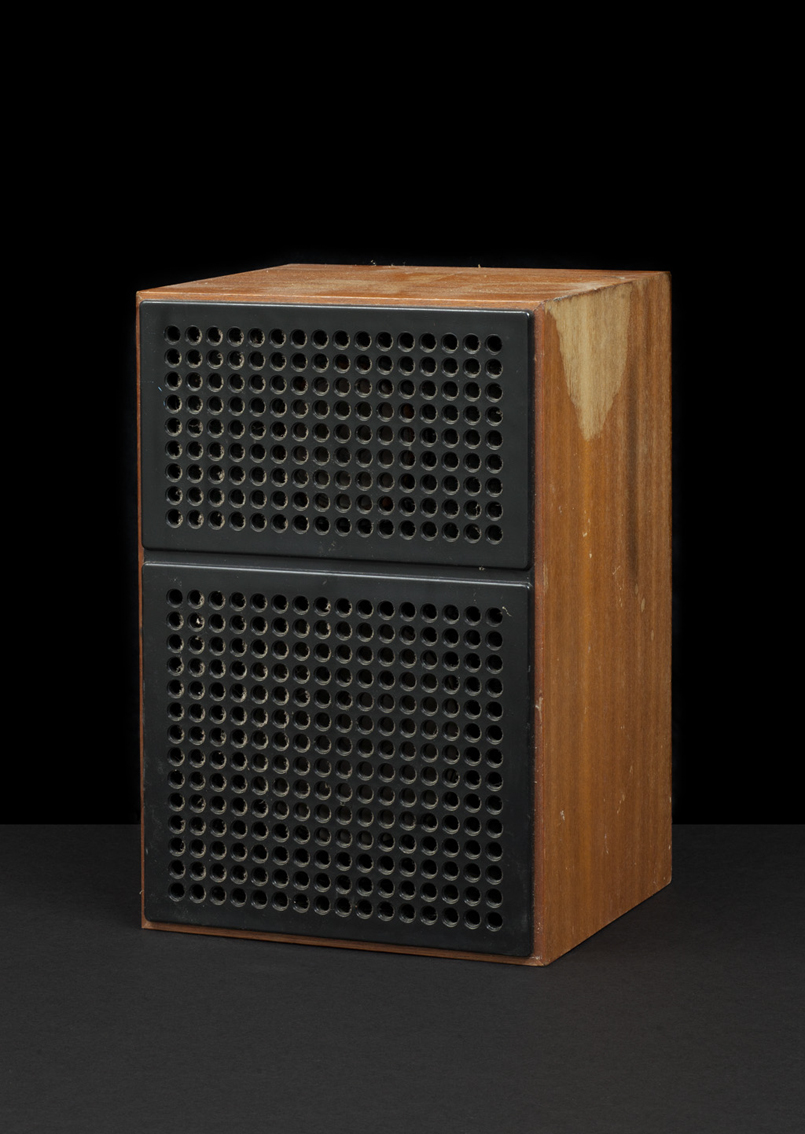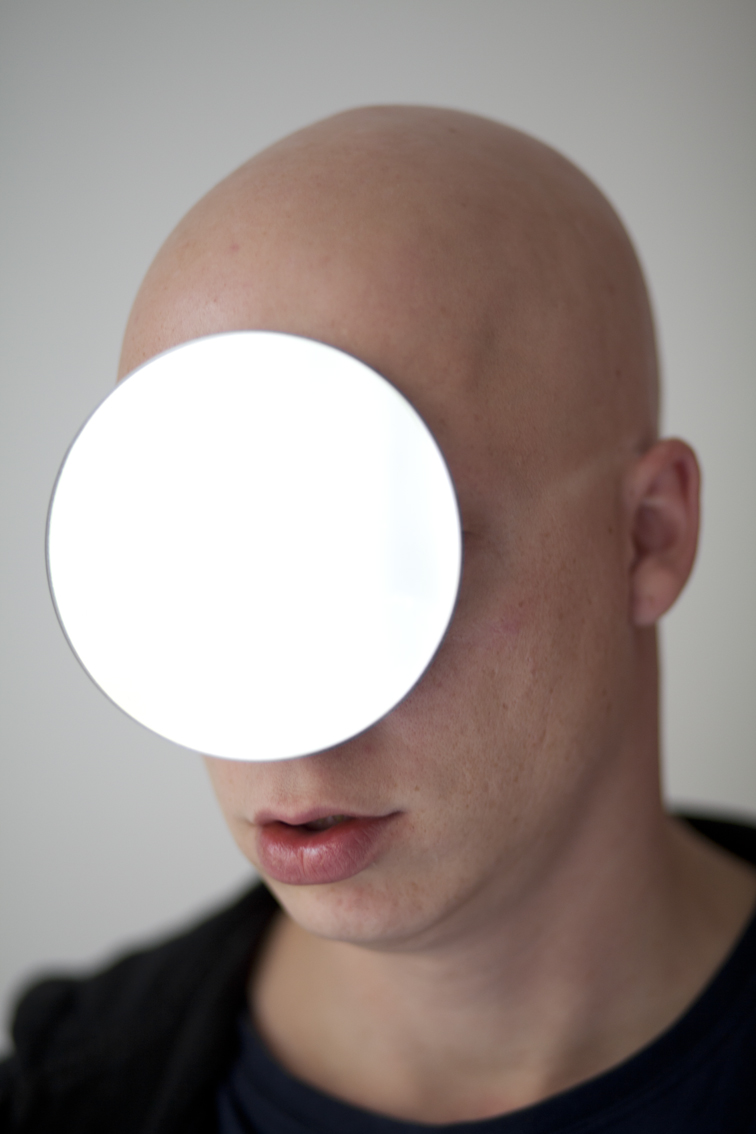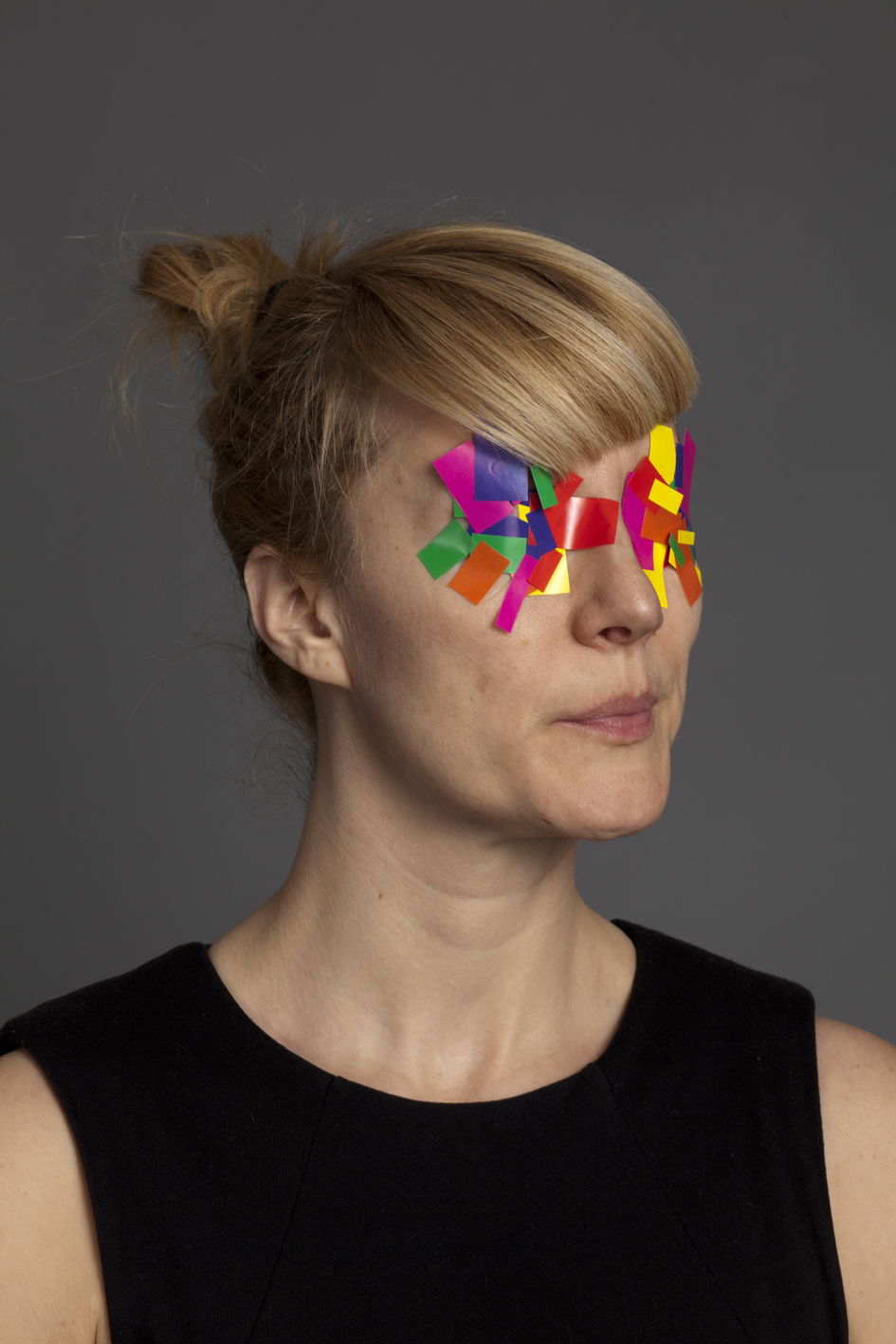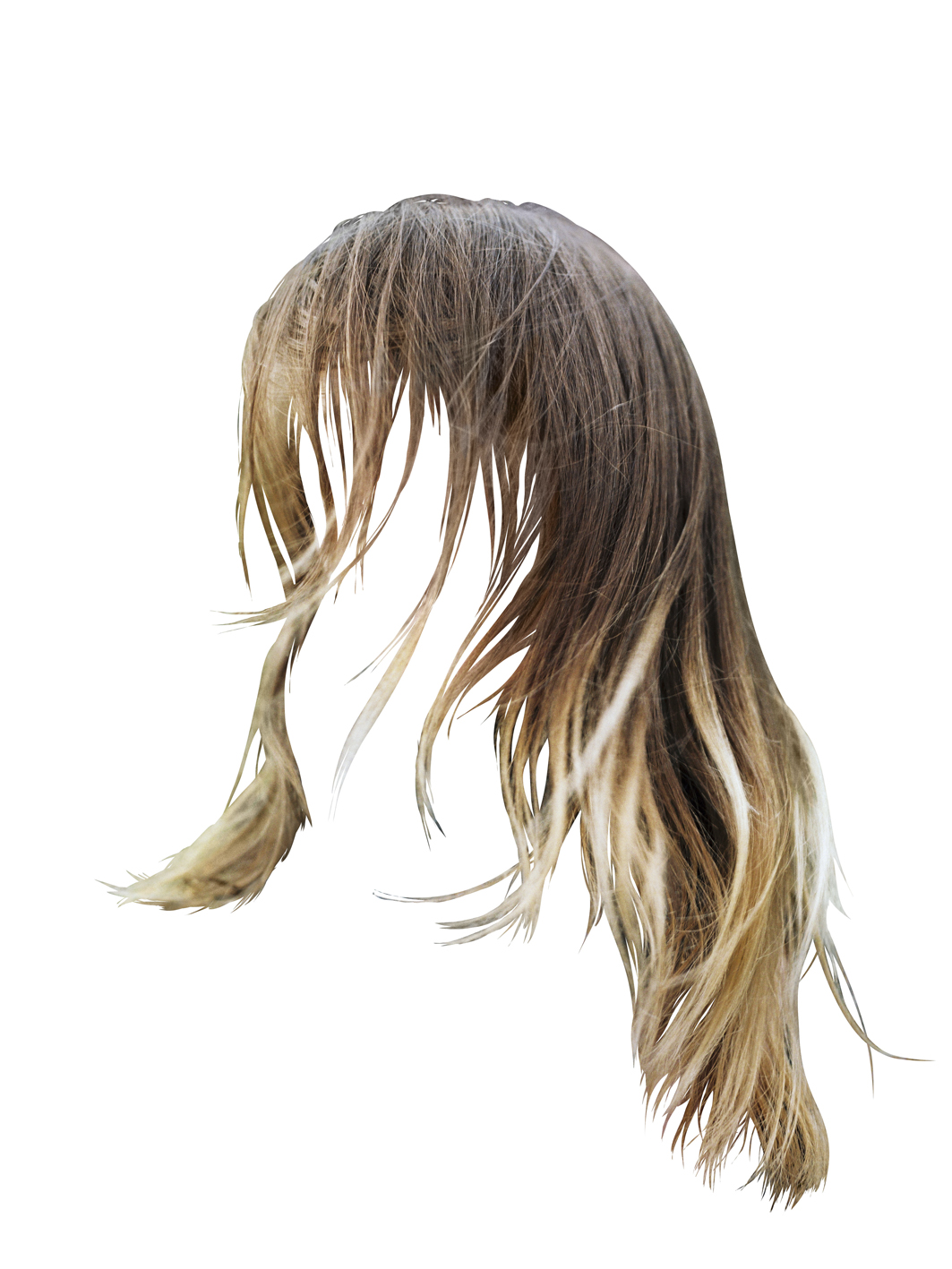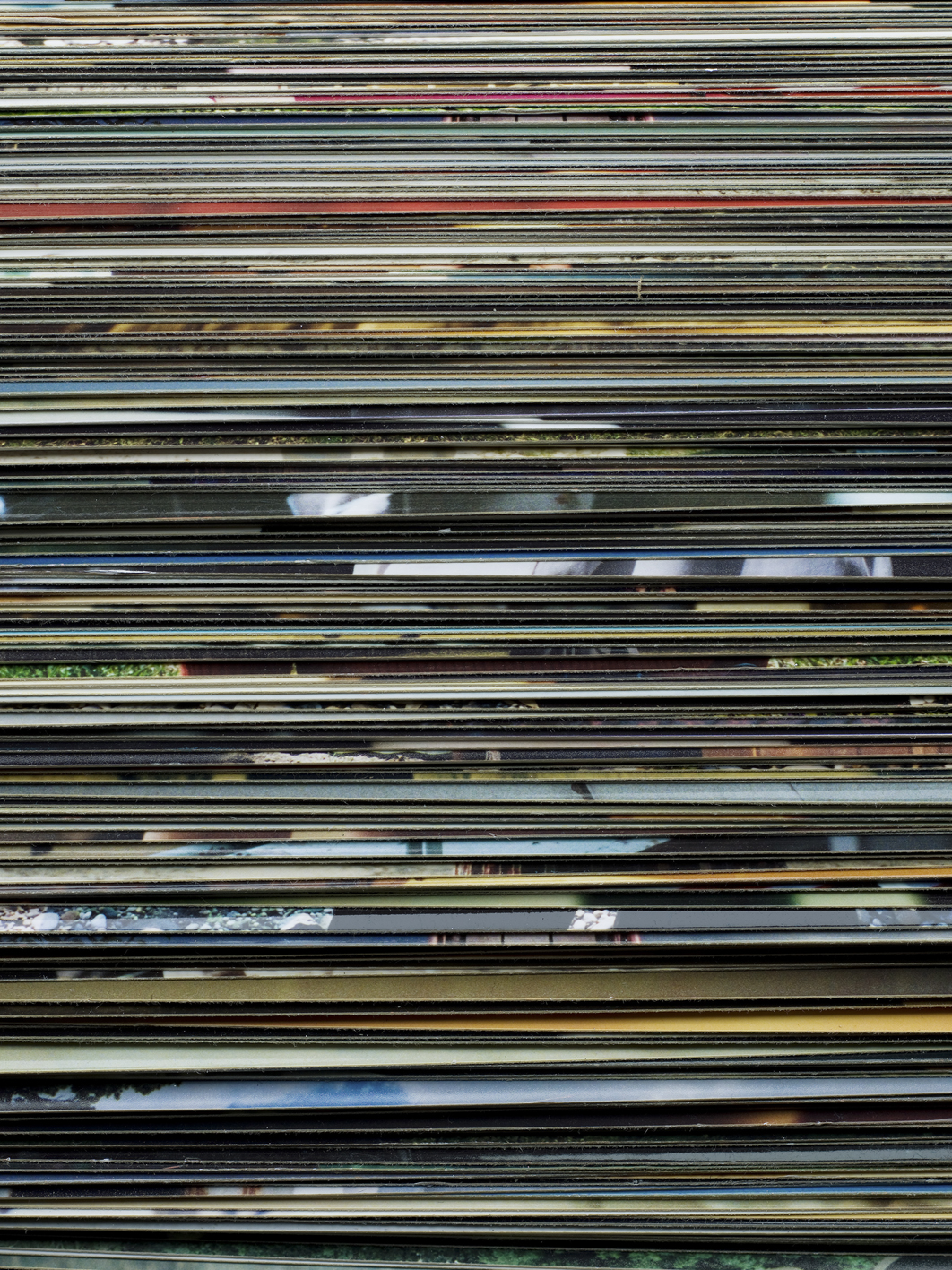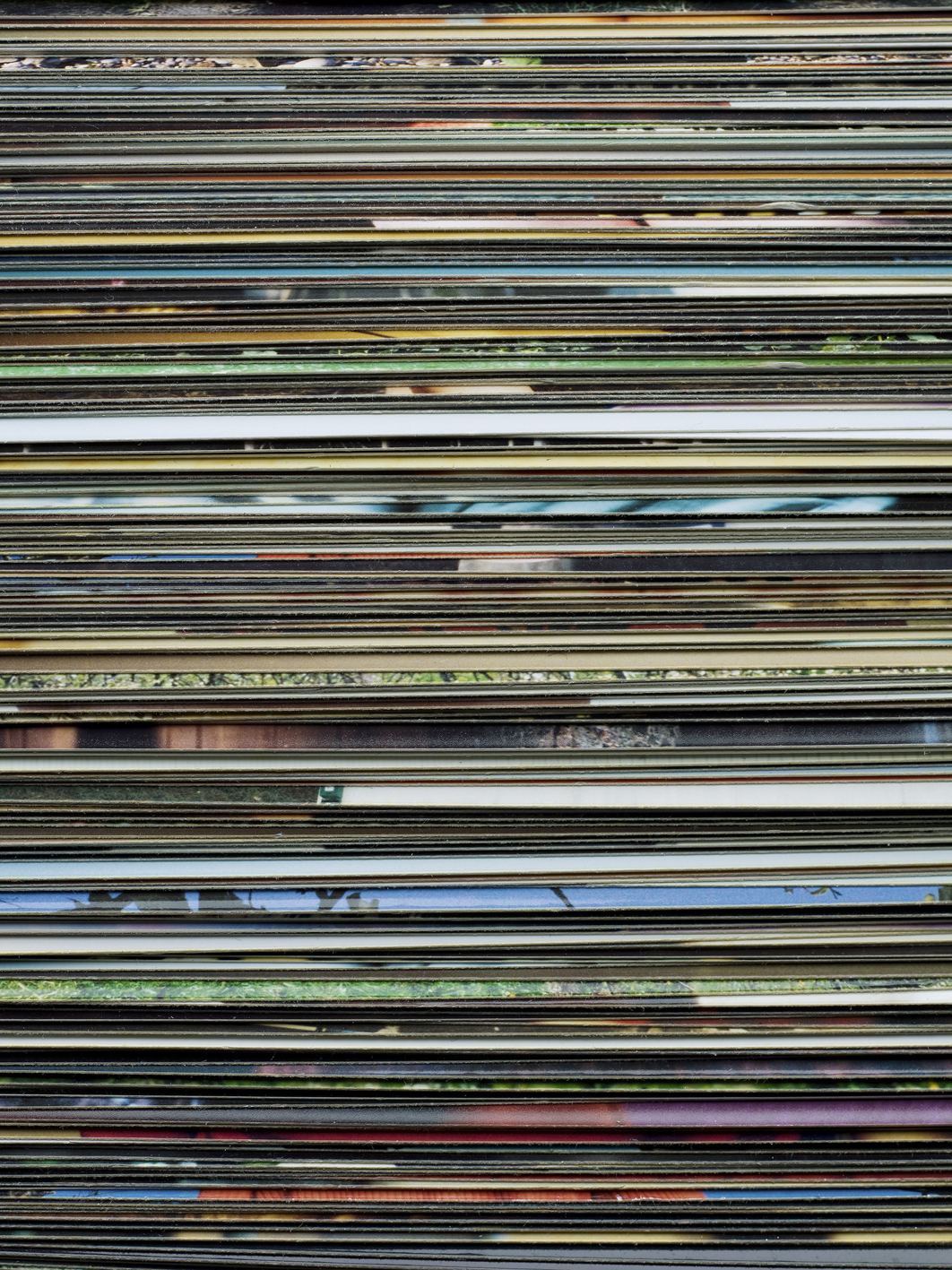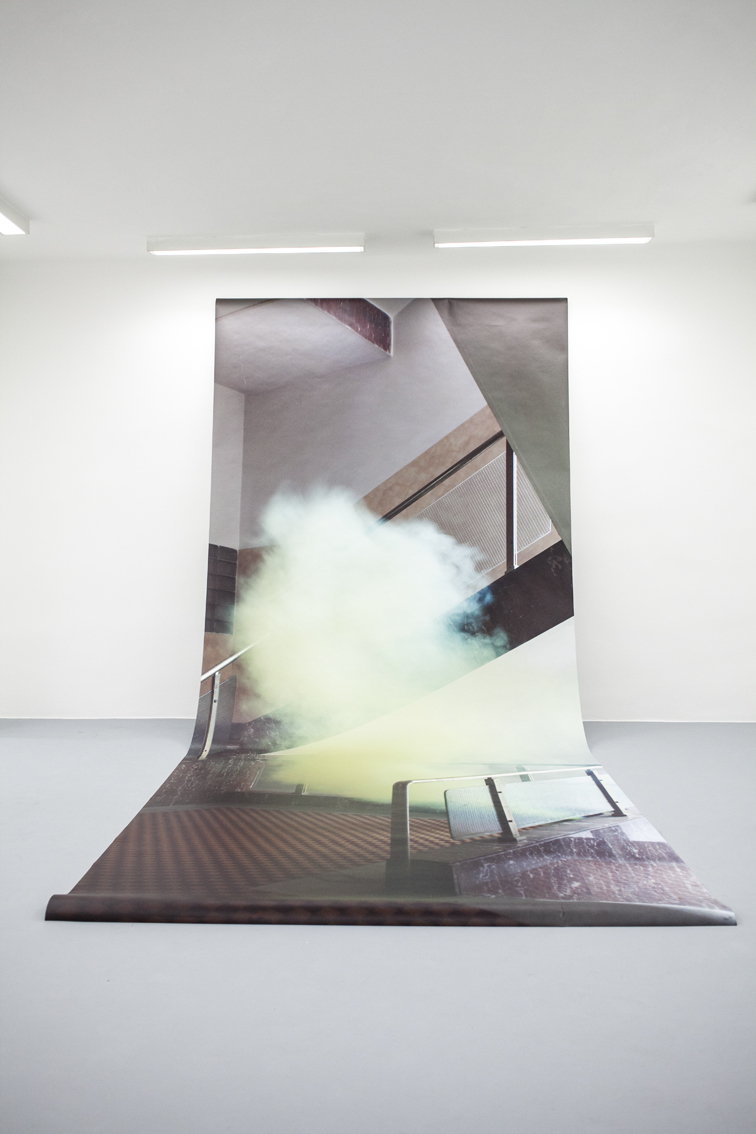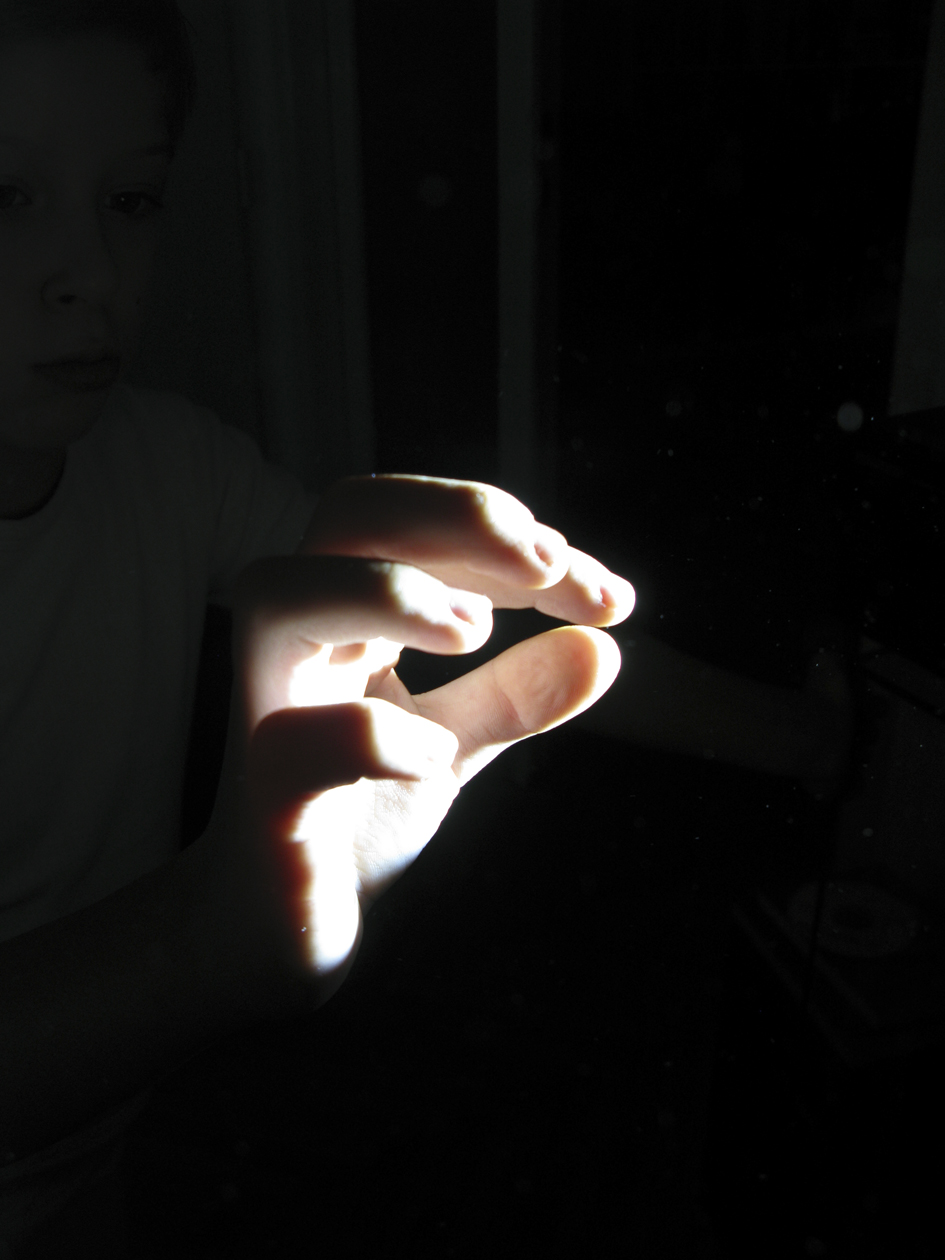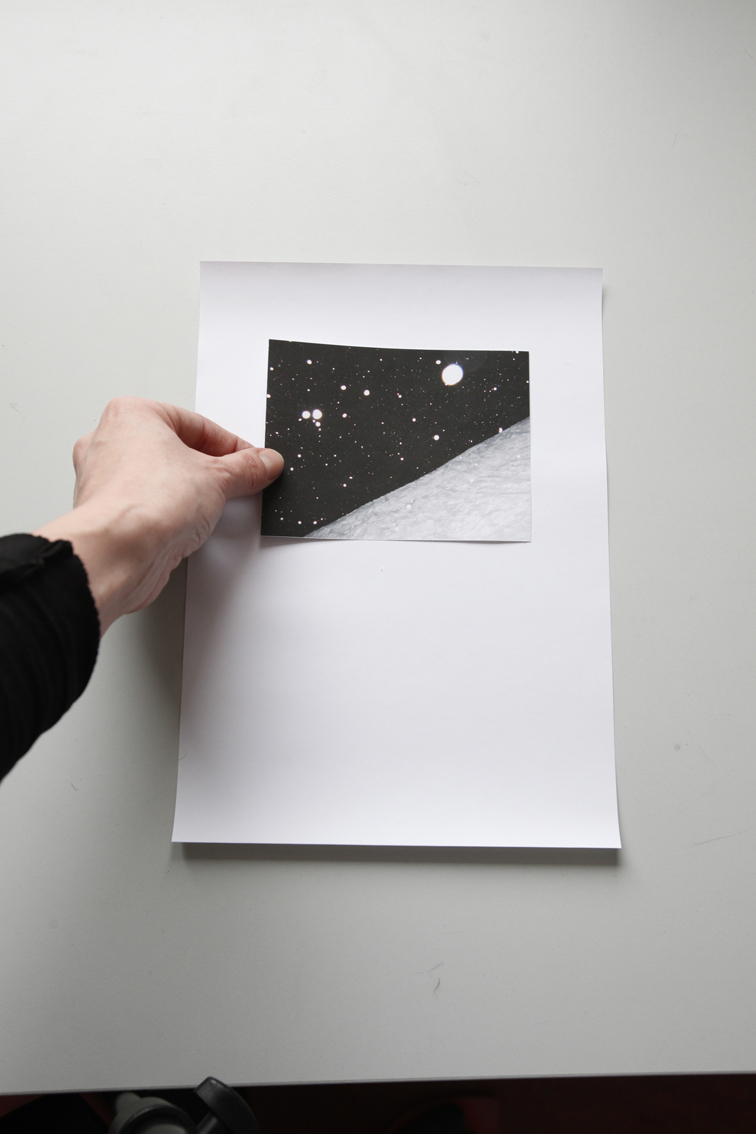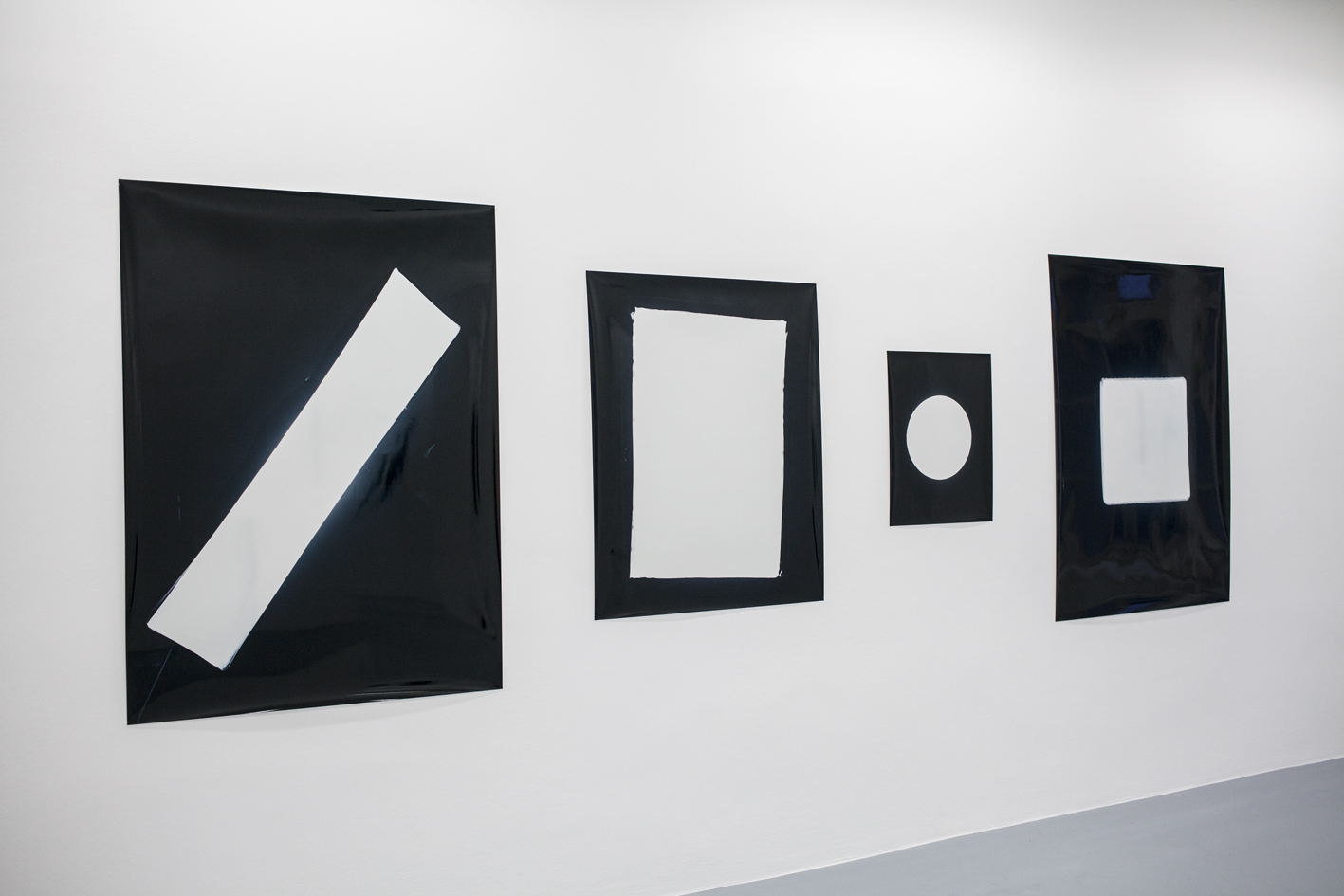The Holes in the Palms of Hynek Alt and Aleksandra Vajd
Czech Hynek Alt and Slovenian Aleksandra Vajd demonstrate both the trickiness and fragility of perception of the photographic image. Their play with optical illusions is part of the multilayered exploration of our relationship to the medium of photography.
Their collaboration can be traced back to 2001 when they made the first images of the portrait collection Manwomanunfinished. They kept on photographing each other for eight years, matching the man/woman images and presenting them as a personal dialogue as well as a wide range of expressional and emotional synergies. Today, Manwomanunfinished can be seen as a closed chapter of their creative collaboration. However, it did play a key role in delining their themes and realizing the potential of their creative methods. On one hand, it was for the first time that Alt and Vajd pointed out the significance of self-reflection in their works. As colleagues and a married couple, they have been revisiting the theme of professional and marital coexistence, which transcends and bridges individual viewpoints, until today; be it by means of a systematic approach to their portraits, or, on a substitutive level, by photographing pairs of objects (e.g. stereo speakers). On the other hand, Manwomanunfinished gave them sufficient experience with the use of photo archives and with the flexibility of meaning of photographs arranged in diverse sets.
Approximately in the middle of the past decade, there has been a turn in their works as they have focused their attention on the reception of the photograph.They have realized that its perception is largely conditioned by anticipation and convention. To name a model example, in Nothing Is Beyond (2009), they have covered the surface around window panes photographed at night, achieving a nearly zero probability of the viewers’ identifying the pictures as a record of a sensory phenomenon. Though they did stick to the conventional scheme of the photograph as a “window to the world“, they would often present the viewers with an abstraction, which may have seemed suspicious only for the fact that the exhibition of black-and-white “suprematist” compositions had been announced as an exhibition of photographs.
In the works by Hynek Alt and Aleksandra Vajd, one often encounters a subversive, almost treacherous treatment of the recipients’ vision and judgment. Their cycle Hole in the Palm (2010) is partially based on optical illusions, reminding of simplified photographic versions of works by M.C. Escher or of scientific visualisations of the paradoxes of sensory perception. One year later, the photographs of the cycle You Can’t Change the Weather were made in improvised gallery conditions as an attempt at a precise imitation of meteorological phenomena. However, rather than deceiving the observer by a spectacular effect, this illusionism aims to present illusion as an integral part of the construction of photographic reality, which always creates an essential tension between representation and its existing model. Alt and Vajd call for a sensitive approach to each individual photograph and for a reconciliation with the treacherous nature of perception, cognitive processes and the following application of gained knowledge. They present photography as a medium the key aspects of which consist not only in the represented objects but also in the qualities and limitations of the technological tool, the concrete conditions and contexts, and, last but not least, the person of the photographer who takes a performative approach to the possibilities, limitations, conditions and contexts.
The scope of Hynek Alt and Aleksandra Vajd keeps expanding; their latest public shows are characterized by synthesis, as the objective relations of the photographed object, the photographers’ personalities and the camera have become components of a complex form within which one can trace the line of a philosophical, psychological as well as a purely sensual approach, without any of the categories exceeding the other. Alt and Vajd put the viewers into compact environmental situations, abandoning the second dimension in favour of a reverse transcription of the construction of space in an image by means of real three-dimensional objects; probing our understanding of light and time in photography; rearranging archives, often without referring to anything else but an accumulated mass of unexposed images; and referring to themselves as participants in these situations. Nevertheless, they keep seeing their subversive traps, presenting the photograph as a decentralized network of rhizomatic connections.
Jiří Ptáček (Eikon 84–85/2014)

